
Service Locator
- Angler Endorsement
- Boat Towing Coverage
- Mechanical Breakdown
- Insurance Requirements in Mexico
- Agreed Hull Value
- Actual Cash Value
- Liability Only
- Insurance Payment Options
- Claims Information
- Towing Service Agreement
- Membership Plans
- Boat Show Tickets
- BoatUS Boats For Sale
- Membership Payment Options
- Consumer Affairs
- Boat Documentation Requirements
- Installation Instructions
- Shipping & Handling Information
- Contact Boat Lettering
- End User Agreement
- Frequently Asked Questions
- Vessel Documentation
- BoatUS Foundation
- Government Affairs
- Powercruisers
- Buying & Selling Advice
- Maintenance
- Tow Vehicles
- Make & Create
- Makeovers & Refitting
- Accessories
- Electronics
- Skills, Tips, Tools
- Spring Preparation
- Winterization
- Boaters’ Rights
- Environment & Clean Water
- Boat Safety
- Navigational Hazards
- Personal Safety
- Batteries & Onboard Power
- Motors, Engines, Propulsion
- Books & Movies
- Cockpit Confessions
- Communication & Etiquette
- Contests & Sweepstakes
- Colleges & Tech Schools
- Food, Drink, Entertainment
- New To Boating
- Travel & Destinations
- Watersports
- Anchors & Anchoring
- Boat Handling
- ← BoatUS Magazine
- Batteries & Onboard Power

Choosing The Right Marine Refrigerator For Your Boat
Advertisement
There's no doubt that a way to keep things cold aboard makes your boating life more pleasant. Here's what you need to know.
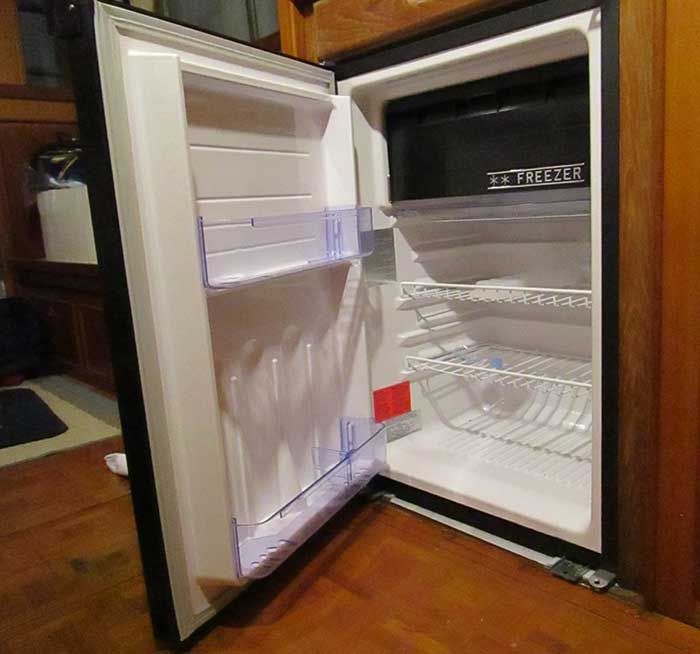
Having some form of refrigeration aboard your boat is a godsend. It keeps perishables fresh, prevents milk from going sour, and, should you also have the luxury of a good freezer, can store ice cream for delicious relief on hot days.
If you spend a lot of time at the dock where shore power is readily available, or if you have an onboard generator that you use frequently, your best choice may be a 110v AC refrigeration unit. It's relatively inexpensive, dependable, easy to install, and should give you years of trouble-free service. Most boaters don't live at the dock, however. If you spend time cruising and anchoring out, a better option may be to use either a 12v DC unit or an engine-driven refrigeration system.
Here's what you need to know if you're considering adding or replacing a marine refrigerator aboard your boat.
What Is Marine Refrigeration?
Before getting into exactly what refrigeration is, it's important to understand what it is not. It is a common misunderstanding that refrigeration creates cold, but this is not the case. Rather, refrigeration is the transfer of heat from one area to another. Basically, all refrigerators work on the same principle: A gas is compressed and allowed to expand inside an evaporator (the plate that gets cold inside the refrigerator). As the gas expands it absorbs heat which is then dissipated on the outside of the refrigerator, either to air or sometimes through a seawater heat exchanger. The expanded gas then passes back through the compressor and the cycle repeats. Although there are some exceptions, which we'll cover in a moment, most refrigeration systems consist of six principle components: compressor, condenser, expansion valve, evaporator, refrigerant, and thermostat.
Types Of Marine Refrigeration Units
There are three main types of marine refrigeration units: 1. Self-contained units (all-in-one or split systems), 2. thermoelectric, and 3. holding plate systems. Each type has positives and negatives depending on your boat, where you boat, and your marine refrigeration needs.
Self-contained marine refrigeration units. The easiest type of marine refrigeration unit to install is a self-contained unit that looks very similar to one you may have in your home. All the components are typically built into the case with the compressor sitting on a metal tray outside and below the insulated cabinet.
Other self-contained marine refrigeration units are a 12-volt DC split system with the compressor and other components sometimes a fairly considerable distance from the insulated box, which only contains the evaporator plate. Many of these systems are available for DIY installation, with converting an icebox to proper refrigeration a popular upgrade.
The simple installation of only two major components — compressor and evaporator — make these units very popular, and they have greatly improved in recent years. The compressor cycles on and off as the box warms and cools. The amount of time it runs depends on the unit, whether it is raw-water or air cooled, and the amount and type of insulation encasing the cold compartment. While these units draw relatively little current, the total amperage draw over a 24-hour period can be more than the boat's electrical system can handle. A close evaluation of your boat's battery size and recharge capability is in order when installing a 12v DC refrigeration system.
Thermoelectric systems. Thermoelectric refrigeration is the exception to the rule and uses no refrigerant. It is also 12v DC powered but uses what is known as the Peltier effect and has no moving parts except a heat-dissipating fan. These quiet units can last a lifetime, and installation is simple, but they're not for every boat. They're far less efficient than other types, requiring more amps to cool a box. They'll cool the box to 40 to 50 degrees below ambient temperature, which is inadequate for the tropics and other hot weather areas, and possibly not worth the power drain.
Holding plate systems. Engine-driven systems with holding plates are the most powerful system for those wanting deep freezes and lots of ice. The compressor typically runs only once or twice a day for short periods, assuming adequate insulation in the box. However, the initial cost is far more than the cost of a 12v DC unit and it is more complicated, so there's a greater potential for problems. If you consider an engine-driven compressor, factor in the cost of labor of mounting the compressor on the engine itself rather than on a nearby stringer. This allows the compressor to vibrate and move with the engine, resulting in less wear and tear on bearings. Also consider that you will not want the compressor to block access to other components. Usually this type of unit is installed by qualified professionals while other types of 12-volt units are easier to install by a "do-it-yourselfer." Some units have two refrigerant channels in the holding plates with the option of separate AC or DC run compressors for use when plugged in to the dock.
Look for marine-grade construction materials. Most holding plates are made of electropolished or powder-coated stainless steel which is corrosion-resistant and attractive. Water-cooled condensers exposed to seawater should be made of a noncorrosive material such as cupronickel. Marine-grade materials add to the initial cost of the unit, but if you're going to make this kind of investment, buy a dependable unit that will last. Check the manufacturer's warranty — longer is better.
Powering A Refrigerator
There are basically three options when it comes to powering refrigeration: 1. AC units that are powered either from a shore power connection or generator, 2. DC units that run from a boat's battery bank, and 3. engine-driven units that have a compressor powered by a belt running from the engine.
Most 12v DC units come with an air-cooled condenser, although a water-cooled condenser, often an upgrade, is preferable, especially in warmer climates. Water cooling is more efficient, so you get greater cooling capacity with a smaller unit, and they can be installed almost anywhere. Air-cooled condensers must be mounted where they can be ventilated to dissipate the high heat removed from the ice box. For 12vDC running at dockside, simply plug in your battery charger and replace the battery power you're using. Away from the dock, your primary consideration is how often and how long you must run your engine to have ice and cold food. Having a dedicated battery bank for your refrigeration unit is a good idea, but remember that you still have to run your engine, generator, or have a wind generator or solar panel to recharge the battery. You can increase your options with an AC/DC refrigerator or icemaker. The dual-voltage units switch from AC to DC automatically when the AC power source is shut off.
Converting An Icebox
If you plan to convert your existing ice box to a refrigerator and/or freezer using a conversion kit, pay special attention to the box's insulation. Heat loss through leakage can be cut in half by increasing the insulation from 2 to 6 inches. Most refrigeration manufacturers will be happy to provide you with good information for properly insulating and/or building an ice box for use with their units.
Portable units can be a popular alternative for some boats that do not have space for a permanently installed refrigerator. They're a smaller, lighter, and a convenient alternative to hauling that heavy, bulky cooler of ice on every outing. But, typically, they don’t cool as well as a permanently installed unit.
Related Articles
The truth about ceramic coatings for boats.
Our editor investigates the marketing claims of consumer-grade ceramic coatings.
Fine-Tune Your Side Scan Fishfinder
Take your side-scanning fishfinder off auto mode, and you’ll be spotting your prey from afar in no time
DIY Boat Foam Decking
Closed-cell foam flooring helps make boating more comfortable. Here’s how to install it on your vessel
Click to explore related articles
BoatUS Editors
Contributor, BoatUS Magazine
Award-winning BoatUS Magazine is the official publication of Boat Owners Association of The United States. The magazine provides boating skills, DIY maintenance, safety, news and more from top experts.
BoatUS Magazine Is A Benefit Of BoatUS Membership
Membership Benefits Include:
Subscription to the print version of BoatUS Magazine
4% back on purchases from West Marine stores or online at WestMarine.com
Discounts on fuel, transient slips, repairs and more at over 1,200 businesses
Deals on cruises, charters, car rentals, hotel stays and more…
All for only $25/year!
We use cookies to enhance your visit to our website and to improve your experience. By continuing to use our website, you’re agreeing to our cookie policy.

Best Marine Refrigerators

Last Updated by
Daniel Wade
May 4, 2023
Key Takeaways
- Most marine refrigerators have reliable energy efficiency and great cooling ability
- Avoid brands that have bad marine refrigerator reviews and poor customer service
- Many brands offer options for a power source and are compatible with a solar panel
- Take measurements of your desired space for a fridge and get one that is space saving
- Some boaters like a silent operation if it is near where they sleep
Long boating trips are best when you can save food with a boat refrigerator. So who makes the best marine refrigerator?
The best marine refrigerators are the Costway Compact Fridge, Alpicool C20, and ICECO VL60. Marine refrigerator brands make various sizes, with different prices, and intended use to compliment your boat. Depending on your intended use will matter to the efficiency of the boat fridge.
In my experience, a boat fridge saves you money with storing groceries and keeping drinks cold on a hot day. If you plan on spending more than a day on a boat then you should try to find the best marine refrigerator for you.
Table of contents
The Top 11 Best Marine Refrigerators
The most efficient marine refrigeration system is indispensable to boating enthusiasts who consider life on water their mantra. Marine fridges can elevate the experience of seafarers and dock dwellers alike while also maintaining the palatability of consumables regardless of the voyage's duration.
Optimal marine refrigerators, such as those outlined below, guarantee the sustenance of provisions during extended expeditions. With portable refrigerators or ones you install for boating, your galley is no longer confined to the shore.
Costway Compact Car Freezer

This cost-effective fridge packs a punch and is perfect for extended camping or fishing expeditions with impressive cooling abilities and ample storage capacity even in extreme heat. It can function as a fridge or freezer and operates efficiently with portable solar panels.
The roomy interior can accommodate beverages and fresh ingredients. Some users reported that the AC adapter’s lifespan is a concern and occasional temperature problems have been reported.
- Lower cost compared to other marine refrigerators
- Solid amount of space inside
- Energy efficient
- AC adapter could be better
- Temperature settings can move off of desired number
Alpicool C20

The Alpicool marine refrigerator boasts a lot of positives. It offers power-saving with its ECO mode and uses roughly 240 watts over the course of an entire day.
After disconnecting from a power source you can still have it powered through a battery and even use solar if you have that setup. It is a little on the small side but perfect for just one or two people wanting to keep their food cold.
- Does not use a lot of power throughout the day
- Lightweight and quiet
- Great job at providing cold air
- Not as large as other marine fridges
- Some may not want a portable refrigerator

A handful of user reviews have stated that this marine refrigerator is something that they would consider tough and made out of marine grade materials. This is a great option for chilled food items on both land and sea no matter the ambient temperature.
It can withstand the elements but do not leave it out for long periods of time in direct weather ailments. If you are looking for the best marine refrigerator this should be on your list if you are needing more holland capacity.
- Plenty of storage to hold cold food
- No problems keeping cold air and can run off of various power sources
- Quality materials making it very durable
- Fan might be loud for some
- More expensive compared to smaller models
Black + Decker Compact Refrigerator

This top brand mini fridge offers pleasant surprises in its compact form. User reviews noted that it kept food and drinks cool throughout a week-long fishing trip while even accommodating extra bottles with smart use of space.
It runs silently and has long-lasting durability. This makes it worth its 70-watt power usage for consistent cooling and ample capacity.
- Reliable cooling from reputable brand
- Proven to last years
- Has a freezer and is quiet
- Eats more power compared to other competing marine refrigerators
- Some users reported the freezer is too small
Ausranvik 63 Quart Portable Marine Refrigerator

Ausravik brings a quality marine refrigerator to the table with its solid cooling capabilities and slightly less in price compared to other brands. It can be used with a variety of power sources to get the job done.
It also has a great feature that will not slam your fingers down with the lid open. This is perfect for families or if you prefer to save your own fingers. You can also find this in various sizes that can meet your cold air and food capacity goals.
- Quick cooling and has low power consumption
- Good capacity depending on size purchased
- Great idea for the anti-pinch feature
- Temperature readings can be off sometimes
- Materials might not hold up in rough conditions
ENGEL Portable Marine Refrigerator

Engel has a history of making quality ice chests and this is right on par with the other quality items they have made. As a portable marine refrigerator this is an excellent choice.
It is well-designed and sturdy enough to handle tough conditions you might experience on the water. It also performs well as it is energy efficient and a not noisy at all. The only drawback seems to be the latches and they might have to be replaced after years of heavy use.
- Quality brand that was able to make another great product
- Silent and energy efficient
- Users have held onto this for over five years or longer
- Latches might have to be replaced after a few years
Whynter Portable Refrigerator

This marine fridge is perfect for traveling and cruising for long periods at a time. Its low power draw, versatility, and cooling capability make it a reliable choice.
It can run on both 110V AC and 12/24V DC power sources without needing to switch wires. It can quickly cool food items to -10 degrees in an hour in a 90-degree ambient temperature. Its robust construction and quiet operation are also notable.
- Great value for the price
- Quiet and can run off multiple power sources
- Quickly cools to desired settings
- A bit heavy when loaded down
- Temperature settings can be off after years of use
VBENLEM Portable Refrigerator

This portable fridge holds more than plenty due to its dual zone design and also saves energy. The electronic temperature control allows you to easily set the desired temperature.
The fridge even has an app for you to control or check on settings. It is durable and comes with an adapter to plug into various outlets for power.
- Plenty of storage
- An app that you control and easy to operate digital display
- Cools fast and is energy efficient
- Draws power even when turned off
- App may be confusing at times
Dometic Waeco Coolmatic

This adaptable and energy-efficient fridge/freezer outshines some of its weaknesses. It perfectly fits boats that have limited space and it seamlessly shifts between functions while saving power at only 48 watts.
The interior space is disappointing but it makes up for it if you are able to maneuver items in a certain way. The power cord is too short and requires an extension if needing to make it work in a given spot.
- Can use as a freezer
- Great cooling capacity
- Can fit on smaller vessels
- Small interior
- Power cord is short and requires extension
EdgeStar Convertible Refrigerator

EdgeStar’s convertible marine refrigerator is compact, durable, and perfect for cooling and freezing needs. With quick cooling abilities that will not drain your boat’s power it is a great option for short trips.
It also could be a convenient backup freezer for fresh produce since it features insulation that rivals traditional fridges. The locking feature and stainless steel finish demonstrate the care put into its design. The compressor did take up a bit more space than desired.
- Great cooling capabilities
- Solid locking feature
- Better if it had more storage space
Norcold 751

This Norcold marine fridge impresses with its sturdy build and generous capacity. Despite a slightly high power draw the cooling performance is superb after fitting an auxiliary fan.
The modern and minimalistic style fits well with most boat cabin styles. It can easily fit in a center console and perfect on a three-day fishing trip.
- Performs well to cool
- Great amount if interior space
- Modern style fridge
- Handles will likely break after a period of time
How to Find the Best Marine Refrigerators
Finding a marine fridge for you will take some time and patience. There are a plethora of options to consider and you will need to understand the intended use for it.
Most metal or stainless steel products indicate a refrigerator's durability. Some major brands offer a various warranties that help make it less of a concern. Look for marine refrigerators that are both stylish and long-lasting.
Type of Power and Use
Numerous 12V refrigerators can run on house batteries or switch between AC/DC. Power consumption varies based on insulation and compressor cycling.
In long-distance cruising you should aim for efficient systems. A propane marine refrigerator will have a fire/explosion risks and pilot lights must be monitored.
Amount of Space
Check the dimensions of potential ice chests, especially if space is limited. Mini marine fridges are usually compact enough but sailboat refrigeration systems may take up a lot of room.
Ensure your sailboat refrigerator fits the designated space in your cabin by measuring it precisely. You should also consider the additional space that a marine drawer fridge will require when opened.
Intended Use
For tougher environments you should aim for a stronger refrigerator. Determine the required capacity by considering if you will be cooking frequently or only storing drinks.
A regular cooler may be sufficient for drinks and then you can utilize the marine fridge. A marine refrigeration kit can enhance performance and its power consumption.
Ease of Transportation
If marine fridges are heavy then they will be a chore to carry often. Frequent use of a lightweight icebox by travelers and boaters makes it easier to carry along on trips.
How Much Sound
Compressor refrigerators are generally louder than absorption-based ones. Most consumers prefer brands that prioritize low running noise despite using compressors. This becomes especially important if the fridge will be running overnight near where you are sleeping.
Budget always plays a role in everything you do. Most boaters want to be able to get a good deal on a marine fridge without breaking the bank.
If you are able to calculate your finances then you should be able to judge your budget range. Keep in mind that the most expensive options are not always the best and that you should do enough research to best fit your needs.
Benefits to Having a Boat Refrigerator
A marine refrigerator provides the same benefits as a home fridge while out at sea and allows for fresh meals. Investing in a heavy-duty refrigerator can provide long-term health benefits and eliminate the need for constantly adding ice.
Although marine fridges have a high price tag and consume a lot of power they offer uninterrupted cooling and eliminate the need for constant re-icing like with a cooler. A standard cooler is more cost-effective in the long run since marine refrigerators require a continuous power supply.
Having one for a fishing trip is a great idea if you are wanting to harvest the fish soon after catching. You would be able to store them after cleaning in your fridge for safe keeping.
How to Take Care of Your Marine Sailboat Refrigerator
Many of these fridges are self-contained and small but it is wise to seek expert assistance to maintain the refrigerant and compressor. You should also have them checked annually and not left out in the elements if possible.
While you are using them you should inspect the seals for any damage and defrost units with a freezer. This allows you to maintain proper humidity levels and cooling capabilities without having your fridge use too much energy.
You should also look for moisture that could cause unwanted mold, bacteria, and pests. The most common places for mold to grow would be where the door closes. This could mean you have an issues with the seal but that would be an easy fix.
Various Types of Marine Refrigerators
There are a handful of marine refrigerators on the market that cater to specific uses. It is important to know what type you are interested in so that you do not purchase one needing special attention upon setting up.
Portable Units
It is easy to understand why portable refrigerators are so popular among vessels that are mobile. They are easy to install, operate right out of the box, and come with their own batteries or compatible with yours.
They are cheaper and more flexible than conventional marine refrigeration options. Some use isotherm marine refrigeration which is known for boosting cooling efficiency and can even be converted from a standard refrigerator using a boat fridge kit.
Cold and Holding Plates
Marine cold plate refrigeration provides an efficient cooling without needing constant operation. Choosing between eutectic and an evaporator plate involves trade offs such as an eutectic plates cool slowly but keep temperature longer and evaporator plates cool fast but lose cold quickly.
Choosing holding plate systems to cool your engine efficiently and can also retain temperatures for hours with proper insulation. These offer great ice retention but note their higher cost and power consumption compared to other sailboat refrigeration options.
Thermoelectric and Propane
Thermoelectric systems draw excessive power for modest cooling, struggle with temperature control, and are restricted to certain boat types. They boast longevity even though they are not the best in the other categories.
They typically can last for decades and even the entire lifespan of a vessel. Keep in mind of their enormous amount of power use due to their unconventional refrigerant-free approach.
Propane is considered risky by some boaters but it is still a viable option for many. Proper safety measures ensure reliability as long as you are keeping an eye on things.
Some marine absorption fridges will utilize a cutting-edge technology that eliminates compressors and fans for noiseless operation. An absorption fridge will harness low-grade heat to power most of the cooling and provide a great alternative for energy hogging fridges.
Are Marine Refrigerators Easy to Install?
Installing a self-contained drop-in refrigerator is easy since the compressor is included. Most featured products either have no separate compressor or none at all. Assembly of Isotherm fridges is best done by a professional unless you are confident in tackling that.
These types of refrigerators are commonly portable and ready to use once plugged in without any additional setup required. It is important to consider a variety of factors such as power source, size, location, and loading style when placing built-in fridges.
Related Articles
I've personally had thousands of questions about sailing and sailboats over the years. As I learn and experience sailing, and the community, I share the answers that work and make sense to me, here on Life of Sailing.
by this author
Most Recent
Important Legal Info
Lifeofsailing.com is a participant in the Amazon Services LLC Associates Program, an affiliate advertising program designed to provide a means for sites to earn advertising fees by advertising and linking to Amazon. This site also participates in other affiliate programs and is compensated for referring traffic and business to these companies.
Similar Posts
Popular posts.

Best Liveaboard Catamaran Sailboats
December 28, 2023

Can a Novice Sail Around the World?
Elizabeth O'Malley
June 15, 2022

4 Best Electric Outboard Motors

How Long Did It Take The Vikings To Sail To England?

10 Best Sailboat Brands (And Why)
December 20, 2023

7 Best Places To Liveaboard A Sailboat
Get the best sailing content.
Top Rated Posts
Lifeofsailing.com is a participant in the Amazon Services LLC Associates Program, an affiliate advertising program designed to provide a means for sites to earn advertising fees by advertising and linking to Amazon. This site also participates in other affiliate programs and is compensated for referring traffic and business to these companies. (866) 342-SAIL
© 2024 Life of Sailing Email: [email protected] Address: 11816 Inwood Rd #3024 Dallas, TX 75244 Disclaimer Privacy Policy

Marine Refrigerators: Make the Right Choice for Your Boat
Selecting the right marine refrigerator for your boat is crucial to ensuring a pleasant and convenient boating experience. With so many options available, it can be challenging to determine which refrigerator best suits your needs.
In this article, we’ll discuss the essential factors to consider when choosing a marine refrigerator and provide recommendations based on different boating requirements.
What Separates a Marine Refrigerator from a Household Unit?
Marine refrigerators are designed specifically for use on boats and yachts, providing cold storage for food and beverages. They are typically built to withstand harsh marine environments and have a few key differences from standard household refrigerators:
- Size and design: Marine refrigerators are usually more compact and designed to fit into the limited space available on boats. They may have front-opening or top-loading designs to maximize space efficiency.
- Power source: Marine refrigerators can run on various power sources, including 12V or 24V DC systems (from the boat’s battery) or 110V/220V AC systems (from shore power or a generator). Some models may have dual voltage capabilities, allowing them to switch between different power sources as needed.
- Energy efficiency: Since boats often have limited battery capacity, marine refrigerators are designed to be energy-efficient. They often use well-insulated compartments and efficient cooling systems like the Danfoss compressor, which is popular in marine refrigeration.
- Vibration and corrosion resistance: Marine refrigerators are built to withstand constant movement, vibrations, and the corrosive effects of the saltwater environment. They often use stainless steel or other corrosion-resistant materials in their construction.
- Secure closures: Marine refrigerators typically have secure latches or locking mechanisms to prevent doors from accidentally opening when the boat is rocking or in rough seas.
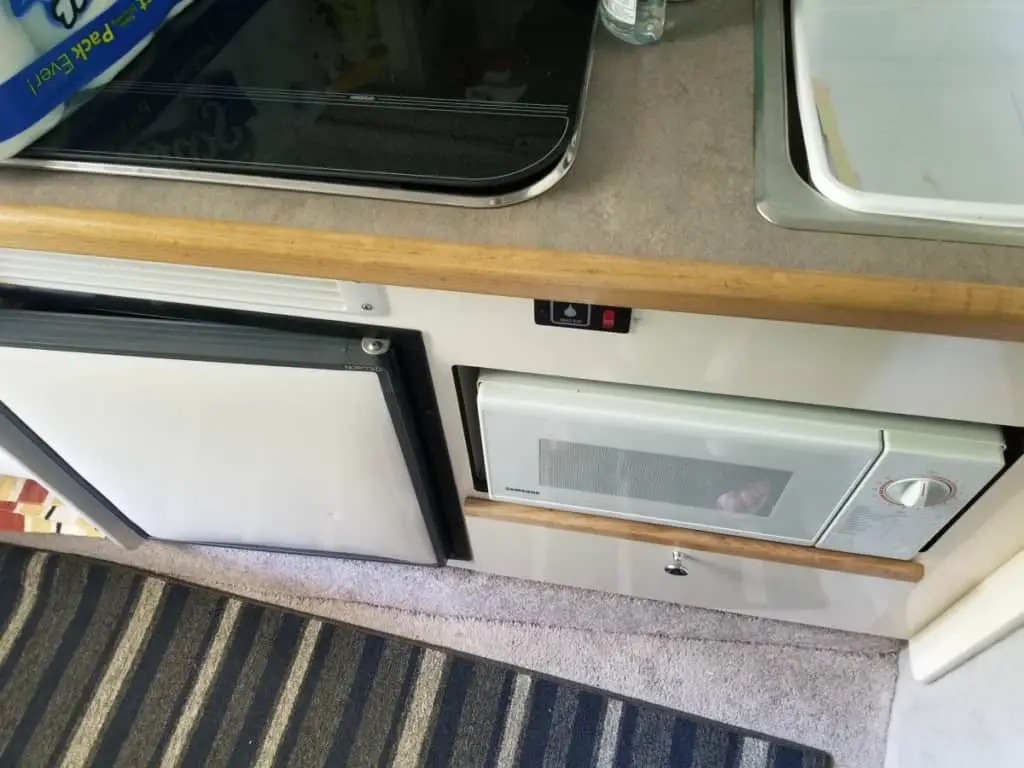
Key Factors to Consider When Choosing a Marine Refrigerator
When selecting a marine refrigerator, keep the following factors in mind:
- Space and size: Measure the available space on your boat to ensure the refrigerator fits comfortably. Take into account the unit’s depth, width, and height, as well as any ventilation requirements.
- Power source: Consider your boat’s power system (12V/24V DC or 110V/220V AC) and whether you need a dual voltage refrigerator to switch between power sources as needed.
- Energy efficiency: An energy-efficient refrigerator is essential on a boat, where battery capacity may be limited. Look for units with efficient cooling systems and good insulation.
- Design: Choose between a front-opening or top-loading refrigerator, based on your personal preference and space constraints.
- Material and construction: Opt for a marine refrigerator with corrosion-resistant materials, such as stainless steel, to withstand the harsh marine environment.
- Cooling method: Marine refrigerators typically use either absorption or compressor-based cooling systems. Compressor refrigerators are more energy-efficient and provide better cooling performance, while absorption refrigerators are silent and require no moving parts.
Top Marine Refrigerator Recommendations
Based on the factors mentioned above, here are our top marine refrigerator recommendations for various boat sizes and requirements:
Small Boats:
- Isotherm Cruise 42 : This compact, top-loading refrigerator offers 42 liters of storage capacity and features a highly efficient Danfoss compressor. It’s perfect for small boats with limited space.
- Dometic Coolmatic CRX50 (Amazon): A front-opening refrigerator with 45 liters of capacity, the CRX50 can run on both 12V/24V DC and 110V/220V AC power sources. Its stainless steel construction ensures durability and corrosion resistance.
Medium to Large Boats:
- Vitrifrigo DP2600 : A spacious, front-opening refrigerator with a separate freezer compartment, the DP2600 offers 230 liters of total storage capacity. It features a highly efficient Danfoss compressor and can operate on both 12V/24V DC and 110V/220V AC power sources.
- Isotherm Cruise 195 : With a total capacity of 195 liters, the Cruise 195 offers ample storage space and features separate refrigerator and freezer compartments. Its stainless steel construction and efficient compressor make it a reliable option for larger boats.
Additional Features to Consider
Apart from the primary factors, consider the following additional features when choosing a marine refrigerator:
- Secure door latches: These prevent the refrigerator door from accidentally opening during rough seas or boat movement.
- Adjustable shelves: Having adjustable shelves allows for more flexibility in organizing your refrigerator’s contents.
- Reversible door hinges: A refrigerator with reversible door hinges can be easily adapted to fit different boat layouts.
- Temperature control: A built-in thermostat or digital temperature control allows you to maintain the ideal temperature for your stored items.
Final Takeaways
Choosing the right marine refrigerator for your boat involves careful consideration of various factors such as size, power source, energy efficiency, design, material, and cooling method.
By assessing your boat’s specific requirements and keeping our recommendations in mind, you can find the perfect refrigerator to enhance your boating experience.
Remember to also look for additional features like secure door latches, adjustable shelves, reversible door hinges, and temperature control for added convenience and functionality.
Happy boating!
- Skip to main content
- Skip to primary sidebar
- Skip to footer
The Boat Galley
making boat life better
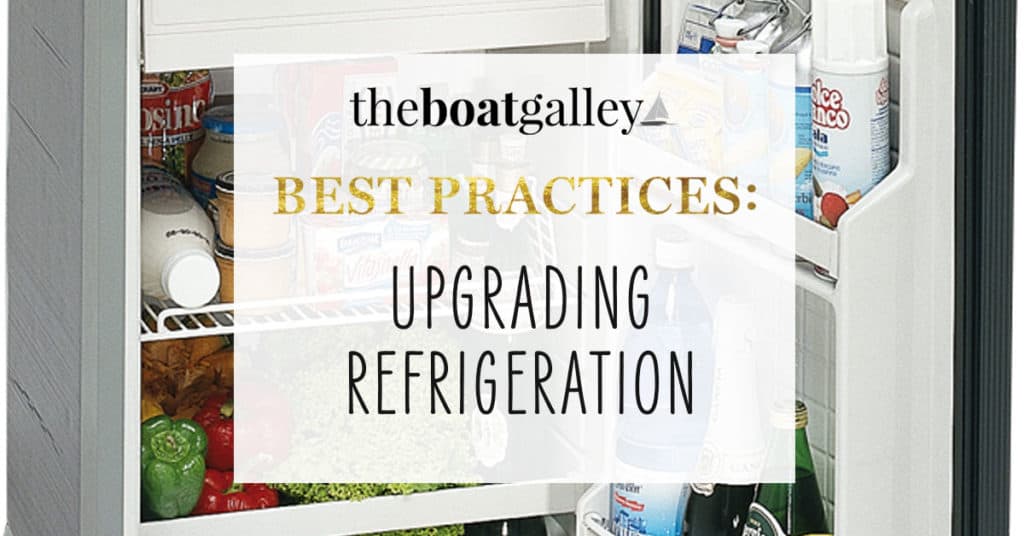
Adding or Changing a Boat Refrigerator
Published on April 29, 2011 ; last updated on June 18, 2020 by Carolyn Shearlock
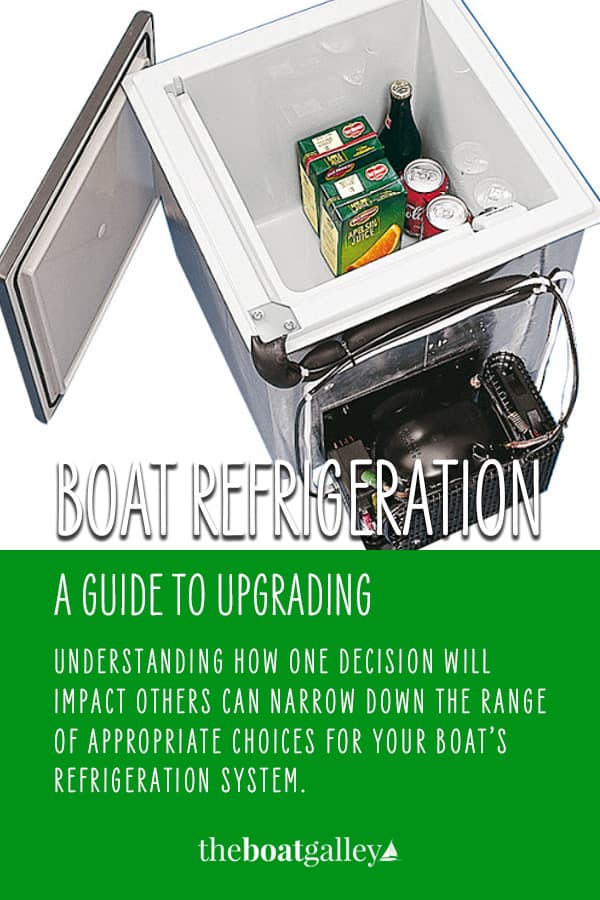
If you’re installing a boat refrigerator for the first time, or doing a major upgrade on your existing system, you may be overwhelmed by the decisions you’re having to make simultaneously. Perhaps a few thoughts here will provide a framework.
Like many things in cruising, from your choice of boat to the route you take, there are no universal answers in choosing a boat refrigerator system. But understanding how one decision will impact others can narrow down the range of appropriate choices for your situation.
Four Parts to a Boat Refrigerator
Adding or upgrading a boat refrigerator isn’t like going out to an appliance store, buying the one you like and having it delivered. On a boat, you need to consider:
- Power and how you’ll supply it
- Where you’ll install the compressor
- The box – size, location and construction all must be considered
- What brand?
They all have to work together to make having refrigeration pleasant, as opposed to a frustration.
(UPDATE: Since I originally wrote this article, we purchased an Engel refrigerator/freezer to use as stand-alone freezer and absolutely love it — see the full article on them here .)
For most cruisers, the first questions with regards to refrigeration are “how much power will it use?” and “how can I provide the power?”
Your other choices will determine how much power the refrigerator uses, as will even your choice of how you power it. If your refrigerator is next to the engine compartment, as is typical on many boats (a serious design flaw), running the engine to provide power – whether via alternator to the batteries or directly for an engine-driven system – actually will heat up the box and cause you to need even more power to cool it down. The same is true if the refrigerator is next to a generator compartment.
Relatively few boats opt for engine-driven refrigeration any more. With an engine-driven system, you run the engine a couple of times a day, generally for 30 to 60 minutes at a time, to cool down large chill plates that then keep the box cool until the next run time. There are several disadvantages to this system:
- You’re tied to a schedule for running the engine – even if you’re at the dock, anchored or sailing along with plenty of wind.
- The temperature in the box fluctuates over the course of the day, particularly in warm climates.
- It’s almost impossible to have a freezer with an engine-driven system.
- If you have a problem with your engine, you’ve just lost your refrigerator as well.
- Fuel cost and engine maintenance add up, not to mention the extra engine hours you’ll rack up.
Read more about the disadvantages of engine-driven refrigeration .
While some large boats opt for 110-volt systems using generators and inverters, and I’ve known a couple of trawlers that used RV propane systems (as did our Gemini catamaran when we bought it; see why we switched to 12 volt ), by far the majority of family cruisers opt for 12-volt systems. A 12-volt system operates off the main battery bank, and power for it can be generated any way you’d otherwise charge the batteries: solar, wind, towing generator, alternator, shore power or generator. Most boats use a combination, and virtually all have to increase their power generation capabilities when they install refrigeration if they haven’t had it before.
Two things to consider with a 12-volt system:
- If you are heading from a relatively cool climate to a hot one (say, going from San Francisco to the Sea of Cortez or Maine to the Caribbean), expect to use a lot more power for your refrigeration than you’re accustomed to. Lots of boats coming to the Sea of Cortez found themselves scurrying to add solar panels or buy a generator as the weather warmed up.
- Make sure your battery bank is sized for the load you’ll be putting on it. Every system is different as to how efficient it is (more on this later), but it’s likely you’ll need 100 amp-hours or more a day if you’re in a hot climate.
More and more boat refrigerators are coming as all-in-one units but many still have a separate compressor. If you choose one with a separate compressor, it’s worth taking a bit of time to think about where you can – and where you should – place the compressor.
Yes, you have to find a spot where there is room and that may seriously limit the choices. But don’t just opt for the first place you find.
In simple terms, most compressors work by transporting heat from the refrigerant to the air around it. It will operate much more efficiently if there is good air flow around it – and if it is kept as cool as possible and if the air that reaches it is as cool as possible.
Therefore, putting the compressor in the engine compartment is not good. Nor is putting it in any enclosed location with only small louvers for air circulation. NOTE: A few systems use a keel cooler that transfers heat to the water instead of air cooling — with these there is little choice in placement.
You also have to consider distance from refrigerator box, as the refrigerant has to make a full loop from the compressor to the evaporator in the box and back. Bends in the tubing and also a long distance make for more resistance to circulation of the refrigerant and hence a less efficient system. Be sure to check the specs before buying a compressor to be sure that it will work in your planned location.
And another important consideration is access for maintenance, recharging the system and other repairs. Okay, so access is never good on a boat. But at least don’t put it where you have to stand on your head or dismount the compressor to check a trouble light or recharge the system.
Ten years ago, the “box” for most boat refrigerators was custom made. Now, far more are drop-in units. Either way, you have a number of choices to make.
Top-loading or front-loading?
If you’re used to a “shore” refrigerator, front loading just seems so much more natural. And yes, it’s usually easier to see what’s there. But front loaders have a nasty tendency to have food fall out if the boat moves while the door is open. And you need to install clear plastic strips to keep as much cold air in the refrigerator as possible when the door is open. And the opening needs to be either fore or aft facing in a sailboat – otherwise everything will fall out on one tack or the other.
After taking a bit of time to get used to it, I actually preferred my top loader. With a bunch of bins to keep things organized, I could find things quickly. And they stayed in place, no matter what tack we were on or how rough the seas. I was even able to open the refrigerator and make sandwiches while we were riding out a hurricane at anchor and rolling gunwale to gunwale.
On our current boat, a catamaran, we have a front loader and I’m struck by how much more often I have to defrost because every time I open the door, warm moist air rushes in.
Size of a Boat Refrigerator
To some extent, a smaller refrigerator is more efficient as there is less space to cool. And yes, having a refrigerator full of cold items as opposed to air is more efficient. But you also need some air space in the refrigerator for that “cool” to circulate. And if things are so tightly packed that you have to remove half of what’s in the refrigerator to get the item you need out, that’s not efficient, either.
A very deep refrigerator can pose problems. One of the top gripes for many women is “standing on my head to get things out of the frig bottom.” (From Mary, on Facebook.)
And let’s face it, you want a refrigerator that’s large enough to hold what you want it to. And that’s a personal “feeling” — you may want enough meat, drinks and veggies for a month at a time, or just food for a weekend. Read my related article on Reducing What You Store in the Refrigerator , though, before making a decision on how much space you need.
If you’re just re-doing the refrigerator, you’re probably more or less locked in to a location. But if you’re re-doing the galley, the top priority should be to keep the refrigerator away from the engine compartment (generator compartment if that’s an issue, too). Second priority would be to keep the refrigerator away from the hull and the sun heating it up. The more it’s away from anywhere that sun will beat down on it (such as next to the companionway), the better.
In general, the thicker and higher the R-value, the better. Materials are constantly evolving, so I won’t make specific recommendations. Of course, if you have a limited space, the thickness of insulation is a tradeoff with space inside the refrigerator.
General design
A lid that latches down (instead of just being held by gravity or a magnetic strip) with a thick gasket is best for your boat refrigerator – far less cold air will seep out. The lid won’t fly across the boat in a knockdown, either!
An outside surface (surround) that reflects heat will also do wonders to help your refrigerator run more efficiently. Que Tal had a teak surround that frequently got warm to the touch in summer – you know that’s not good.
If you decide to put a drain in the bottom for when you defrost, it needs to have a trap in it – and the trap needs to be within the insulated area. An alternative is to be able to securely close the drain. Otherwise, hot air from the bilge (well, maybe not hot , but hotter than what’s in the refrigerator) will rise into the refrigerator and you’ll constantly be having to cool it.
There are all sorts of design possibilities for having either a separate freezer or a freezer compartment within the refrigerator. The size of the freezer determines how much meat you can carry, as well as how many meals you can prepare ahead for a passage. But it takes a lot of energy to freeze foods in the first place, although not a lot to keep a full freezer frozen.
My freezer was about ½ cubic foot, and I found it adequate (I boned all meat before freezing so as not to waste space on non-edible items), but I would have loved a larger one. If you want to have ice, remember to allow room for trays (be sure to get the vertical ones) in addition to food. Note that very few boat freezers are cold enough to keep ice cream.
I now use a Engle Portable unit as a dedicated freezer and love it — and it will freeze ice cream, even on the hottest days.
The Brand of Your Boat Refrigerator
The longer we cruised, the more adamant we became about buying brands – and models within brands – that lots of other cruisers were using or that were composed of generic parts. Regardless of whether it was refrigeration or another system, we found over and over again that having something that other people – both helpful cruisers and local repairmen – knew of and could get parts for was worth not necessarily having the “latest and greatest.”
Good repair manuals that you can actually get, off the shelf parts, and universal fittings are crucial once you’re away from the original installer. I also like companies that will respond to technical support questions by e-mail (you don’t want to deal with support issues by sat phone). The time to think about these issues is before you plunk your money down.
As you work through these questions, you’ll almost certainly have to make some compromises to end up with a boat refrigerator system that works for you. The trick is to realize the tradeoffs as you’re making them, and not after the fact when things aren’t working the way you envisioned. For example, a tiny box with thick insulation won’t use much power – but will it give you the food and drinks you want?
A refrigerator is an expensive piece of galley equipment – even more so if you have to add extra batteries and upgrade your power generation. As brands and models are always changing, I don’t want to recommend specific systems. But as you talk to sales reps, realize that there are numerous components to the refrigeration system, and choices in each affect the others . . . and your ultimate satisfaction!
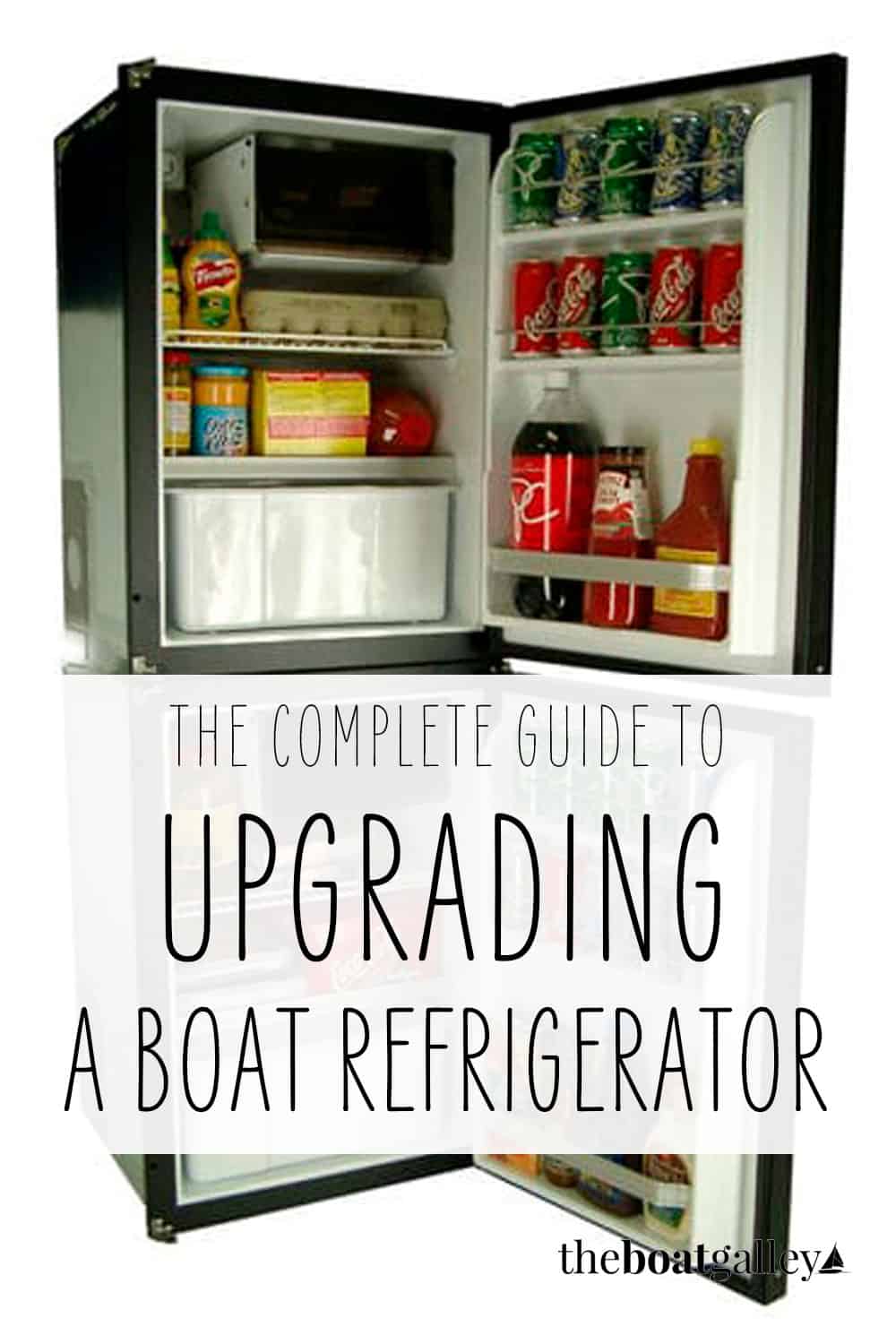
And check out our other courses and products
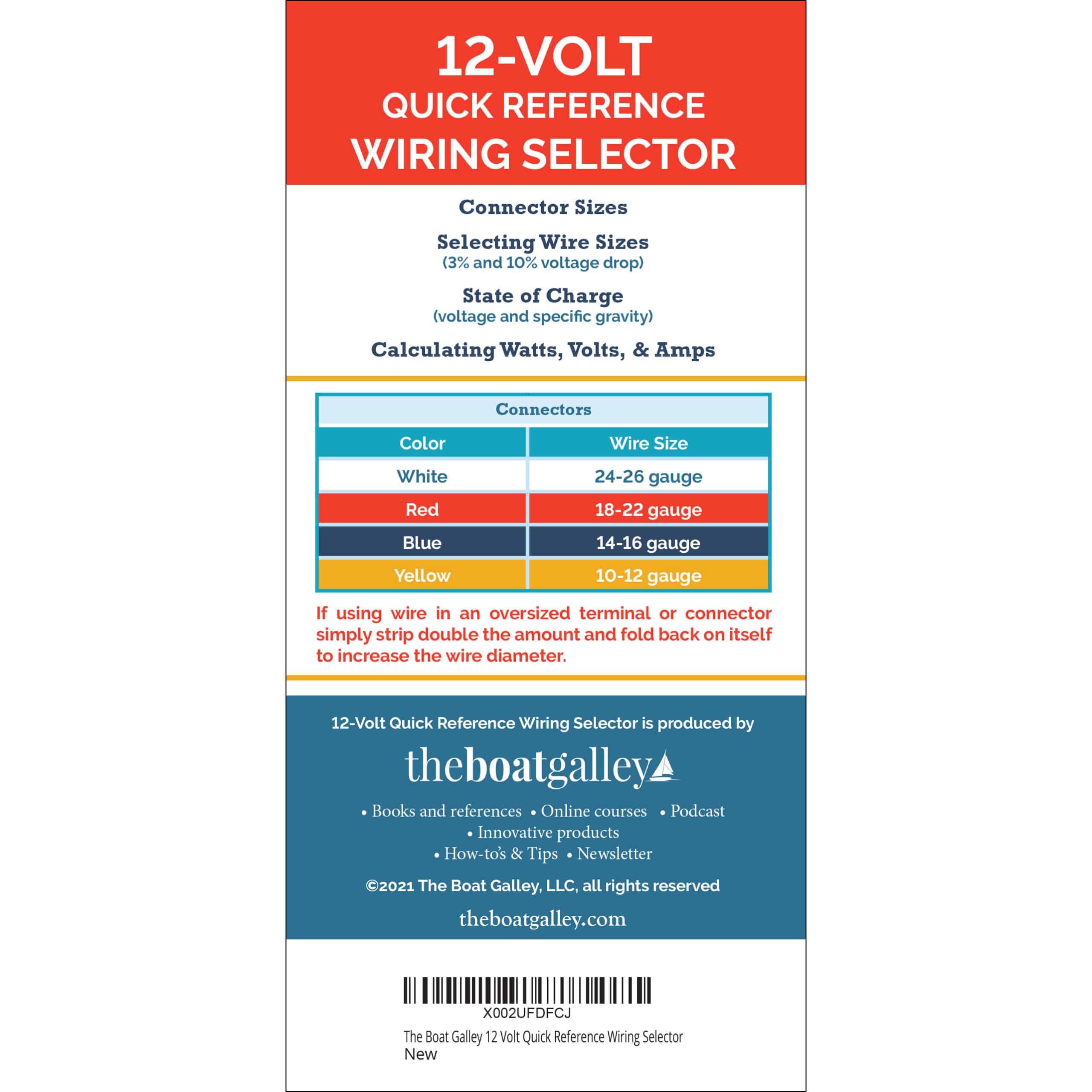
Find this helpful? Share and save:
- Facebook 663
- Pinterest 150
Reader Interactions
Downeaster32 says
April 3, 2012 at 10:48 pm
Most compressors have a single fan, and this is typically mounted to blow from the cabin on to the compressor and into the locker. I believe a big chunk of efficiency can be gained by adding another fan. The fans do not take much power themselves (small computer case fans). One fan is the intake which draws air over the compressor & cooling coils inside whatever locker they’re mounted. The second fan is an exhaust, which pulls the now-warmed air back out of the locker and into the cabin again. In my setup, the fans are pointed 90 degrees from each other, on each side of a corner locker. I don’t have comparison power measurements, I just notice the fridge seems to run much less and the locker stays much much cooler (and fresher smelling too).
Renato says
August 10, 2012 at 10:47 pm
The most perfect explanation about refrigeration for small boats I have seen yet. Renato, Rio de Janeiro city, Brazil. Thanks a lot !
January 30, 2013 at 2:18 pm
Hi,Thanks for your explanation. Given I am doing a full refit on my yacht your explanation helped in that I have a lot more to think about in what we need to do before I go ahead and make that final decision. Thanks a lot… David “Pelikan” Singapore
June 27, 2013 at 2:13 pm
Nicely done and THANKS!
I’m in the planning stages of building (I hope) a 44 footer to live aboard/cruise full time. I came across your article in doing research and greatly appreciate the explanation given. I had looked at “normal” marine refrigerator/freezers that look similar to home units but run off 12v or 24v when not connected to shore power. Your article has me leaning much more towards a custom built top loading system now, especially since I can add much more insulation in a custom system and therefor use much less power.
Randy Mabry says
December 24, 2021 at 6:56 pm
You can add as much insulation (rigid foam) to a off-shelf front-loading refrigerator as you commit space for. Just attach to the outside of the refrig 3 sides ( sometimes additionally bottom & back sides. I also insulated the Inside of the hull wall in the locker (1″ rigid foam). As suggested earlier. i added a box fan blowing on the refrig coils controled by easily available 12v thermocouple set to come on at locker temp 95 deg.
Billy Forde says
November 15, 2013 at 11:48 am
There is an insulation product called Spaceloft. Search for it on ebay. I wrapped my top loading box in this and could not believe the difference. Its a bit expensive but amazing insulation. It more than halved the time the compressor runs. My box is now more cold and requires less than half the power to keep it that way. The point about the 2 fans is a very good one. I’m going to try that. It makes perfect sense to me to expel the warm air the fan has extracted from the heat exchanger. Also cold air sinks, when you open a top loader very little cold air escapes as colder air naturally falls back into the sealed compartment. When you open a front opening fridge almost all the cold air flows out the bottom like water and warm air rushes in to the top of the fridge so forget about a front opener. Sail on and remember you can never know too much!!
P. Childs says
May 12, 2015 at 10:00 pm
The simplest system with the least power draw is an Engel. No more antiquated 1940 technology components and systems that won’t freeze ice cream. The ONLY system on our boat that is dependable, modestly priced and outperforms day in and day out is our Engel. Small amperage draw, and can be either cooler or freezer, instantly, on your command of the thermostat. it will automatically revert to 110 or 12v when changing from shore to ship power. We love the portable marine unit, but would like to take it a step further and throw the cold plate amp hog nightmare overboard and replace with a drop in Engel or another Engel portable. We could have three more Engels for the amount of wasted money poured into maintaining the antiquity of cold plates, lines, and pumps.
Mike Wilson says
May 13, 2015 at 8:25 am
Could not agree more with regarding junking the hold plates. Mexicolder has been advocating this for years. Portable systems are good put truly lack insulation which is the cornerstone to success and thus the amp draw in super hot climes like the Sea of Cortez….day after day 100F PLUS. Mexicolder has a long proven track record in this respect. We use a double fan cooled condenser, they only way in serious heat as a static coil is not enough.
captain ron says
May 23, 2015 at 6:33 am
Yes i keep 2 of then . one 80 lt freezer witch i run the boat motor until it freezes to minus 10 and have ready made frozen meals already made up and sealed . then i only open it once every few days and take out what i need and put into a 2 nd fride at 3 deg and use at will . the freezer uses very little power when all is frozen . u carnt keep opening it all day long to get out food and drink or it won,t stay frozen .Every months or so i refill it with prepared meals and freeze it down solid again .
Frank Collins says
September 30, 2015 at 7:13 pm
I also found it helpful to purchase a small RV refrigerator fan. The fan circulates the cold air and runs a week or so on 2 “D” batteries. On EBAY the run about $20.. I put the small fan box as close to the freezer as possible
Leave a Reply Cancel reply
Your email address will not be published. Required fields are marked *
Each week you’ll get:
• Tips from Carolyn • New articles & podcasts • Popular articles you may have missed • Totally FREE – one email a week
SUBSCRIBE NOW
- Questions? Click to Email Me
- Visit Our Store

- New Sailboats
- Sailboats 21-30ft
- Sailboats 31-35ft
- Sailboats 36-40ft
- Sailboats Over 40ft
- Sailboats Under 21feet
- used_sailboats
- Apps and Computer Programs
- Communications
- Fishfinders
- Handheld Electronics
- Plotters MFDS Rradar
- Wind, Speed & Depth Instruments
- Anchoring Mooring
- Running Rigging
- Sails Canvas
- Standing Rigging
- Diesel Engines
- Off Grid Energy
- Cleaning Waxing
- DIY Projects
- Repair, Tools & Materials
- Spare Parts
- Tools & Gadgets
- Cabin Comfort
- Ventilation
- Footwear Apparel
- Foul Weather Gear
- Mailport & PS Advisor
- Inside Practical Sailor Blog
- Activate My Web Access
- Reset Password
- Customer Service

- Free Newsletter

Mason 33 Used Boat Review

Beneteau 311, Catalina 310 and Hunter 326 Used Boat Comparison

Maine Cat 41 Used Boat Review

Cheoy Lee Clipper 36 & 42 Used Boat Review

Tips From A First “Sail” on the ICW

Tillerpilot Tips and Safety Cautions

Best Crimpers and Strippers for Fixing Marine Electrical Connectors

Thinking Through a Solar Power Installation

Stopping Mainsheet Twist

Working with High-Tech Ropes

Getting a Clue for the Blown-Out Clew

Monel Seizing Wire is Worth the Extra Cost

Fuel Lift Pump: Easy DIY Diesel Fuel System Diagnostic and Repair

Ensuring Safe Shorepower


Sinking? Check Your Stuffing Box

The Rain Catcher’s Guide

Boat Maintenance for the Technically Illiterate: Part 1

Whats the Best Way to Restore Clear Plastic Windows?

Mastering Precision Drilling: How to Use Drill Guides

Giving Bugs the Big Goodbye

Galley Gadgets for the Cruising Sailor

Those Extras you Don’t Need But Love to Have

UV Clothing: Is It Worth the Hype?

Preparing Yourself for Solo Sailing

How to Select Crew for a Passage or Delivery

Preparing A Boat to Sail Solo

On Watch: This 60-Year-Old Hinckley Pilot 35 is Also a Working…

On Watch: America’s Cup

On Watch: All Eyes on Europe Sail Racing

Dear Readers

Chafe Protection for Dock Lines
- Belowdecks & Amenities
- Systems & Propulsion
Portable Marine Refrigeration Test
Always wanted a refrigerator or freezer on your cruising sailboat or yacht, but didnt want to install a built-in marine refrigeration system our testers examine four portable units driven by compressor: the engel mt35f, the norcold mrft40, the norcold mrft60 (all built by japanese manufacturer sawafuji electric), and the waeco cf-40 coolmatic..

One of the advantages of a compressor-driven portable refrigerator is that it can also serve as a freezer. And compared to thermo-electric coolers, they require fewer amps to do the job. Cruising boats need to be energy efficient, so amp consumption with a 12-volt power supply was one of the key factors Practical Sailor looked at in this test. As in any marine refrigeration test, insulation is a key factor in efficiency, so our comparison also tried to single out the best insulated units. Ultimately, the linear compressor system used in the Engel and Norcold refrigerator/freezers proved to be more efficient.

There are three solid reasons why compressor-driven, portable refrigerators and portable freezers have displaced and overwhelmed all other competitors in every arena where they are used: They are quiet, efficient, and effective. They’ve also proven to be long-lasting and low-maintenance. The major downside is the high cost. However, if you need the capabilities of one of these units, there essentially is no alternative. Your best bet is to pick a unit that fits your needs and budget. In the April 2007 issue, we covered thermoelectric coolers. This time around,
Practical Sailor takes a look at portable, compressor-driven units that can serve as either a refrigerator or a freezer.
What We Tested
We found four units with at least a 34-quart capacity. From Engel, we received the MT-35F, and from Norcold, the MRFT 40 and MRFT 60. Japanese manufacturer Sawafuji Electric Co. builds all three. Waecos CF-40 Coolmatic rounds out the field.
All of these plug into cigarette lighter outlets, a convenient but trouble-prone connection to have on a boat. Replacing the fridge plug with a marine-grade plug and socket is an option, but we recommend hard-wiring the fridge to the boats 12-volt system. In any case, it is important that the sockets wire size and the socket or connection are rated to carry the current these devices require. They should be sized so that there is no more than a 3 percent voltage drop in the circuit.
Both the Engel MT-35F and the Norcold MRFT 40 lighter plugs have thermal fuses designed to blow at temperatures higher than 160 degrees F or if there is an electrical short. The Waeco and Norcold MRFT 60 have common, fused lighter plugs. Regardless of the plug fuses, we recommend making sure the lighter sockets is also fused or protected with a properly sized circuit breaker.
How We Tested
Tests were conducted simultaneously on all four units indoors, where we regulated the ambient temperature to 76 degrees F using air-conditioning. During initial testing, each unit was set to its coldest temperature level. We wanted to see how fast theyd cool and how cold they would get. It was important to know if these units were really capable of achieving and maintaining freezing temperatures.
For power, we used our robust Astron VS-70M power supply regulated to 12.8 volts DC and the manufacturer-supplied DC cable for each unit. Testers monitored the output voltage using a Sperry DM-4100A digital meter. (We did not test the units using AC power.) DC-amp-draw measurements were taken with a Fluke 336 clamp-on ammeter. We took several measurements over the following three hours as the boxes cooled. Noise levels were measured in decibels using a Radio Shack sound level meter held 6 inches from the compressor end.
Temperature measurements were taken using a digital Fluke 116 multimeter with a thermocouple temperature attachment. The sensor, a long, thin wire with the temperature probe at the end, was placed into the box as near as possible to the center. (We only opened the lid enough to get the wire inside, usually no more than a 1/16 of an inch.) Once we had the reading, we opened the lid/door for a second and read the Taylor 5924 analog refrigerator/freezer thermometer we had placed inside each unit as backup. As long as the readings were comparable, we recorded the digital reading. All were. Past experience testing other types of coolers, refrigerators, and freezers led us to take temperature readings at one hour and again at two hours. After each two-hour reading, we opened the lid and placed a one-gallon plastic jug filled with 100-degree water into the box. Three hours later, we took another temperature reading to see how well the boxes had done cooling with the water jug inside. Once each one of these temperature readings was completed and recorded, we let the coolers run unattended for 12 hours. We measured the temperatures again, then shut off the electrical power. Five hours later, we recorded another reading to see how well the boxes were insulated. The next day, after letting each unit return to room temperature, we cranked them up again, but this time, testers set them to the warmest temperature level. After they ran overnight, we checked and recorded the temperature each box was maintaining.
We wanted to see how well each cooler held food and drinks, so we packed each with the following:
(2) six-packs of canned soda
(1) six-pack of bottled beer
(1) gallon of lemonade
(1) gallon of ice tea
(1) pound sliced turkey breast
(1) 1 pound boneless ham
(2) pound blocks of cheese
In the final analysis, we picked winners based on performance, construction quality, warranty, power usage, price, and load capabilities.
Engel MT-35F
Engel is the worldwide brand name and distributor of a full line of portable fridge/freezers that range from 14- to 84-quart capacity. Engel refrigeration products, which are built by the Sawafuji Electric Co. in Japan, have been known for their quality since production started in 1962.
Our test model, the MT-35F, has a 34-quart capacity and its exterior is constructed of powder-coated and galvanized steel.
The Engel is designed to sit flat and open from the top. Its locking lid is removable for better access to the interior. Carry handles bolt onto the case sides, but we did not install them. The interior of the Engel is constructed of bright white, high-impact plastic for easy cleaning. A metal basket fits snugly inside and provides a means to hold or remove contents.
In our testing, we found the box temperature could be set between approximately 0 and 50 degrees F, making the unit useful as either a refrigerator or freezer.
The Engel held our full list of food and drink as well as three 1-pound packages of burger meat.
Bottom Line:
A top performer with an efficient compressor and low price. We rated it the Practical Sailor Budget Buy.
Norcold MRFT 40
The 40-quart Norcold is nearly identical to the Engel MT-35F. Both share a 25-inch x 14-inch footprint, but the Norcold is about 4 inches taller and uses the extra height to achieve increased capacity. Both are built in the Sawafuji factory, use the same compressor, and are constructed from powder-coated and galvanized steel outside, with high-impact plastic inside. The lid, lid lock, handles, and interior basket are the same, too, but the Norcold basket is a bit taller.
The Norcold performed well in testing and can be set to operate from 0 to 50 degrees.

We had no problem loading all of our groceries into the 40-quart Norcold. It had so much extra room, we were able to load 12 one-pound packs of burger meat, too.
A top performer.
Norcold MRFT 60
At 67 pounds, the bulky Norcold shouldnt be considered easily portable. Moving this big unit is a two-person job. It is another product of the Sawafuji Electric Co. and shares all the characteristics and features of the Engel and Norcold 40-quart. Everything is upsized here, with a larger compressor and interior.
The MRFT 60s top-mounted lid swings opens to the side and uses a chain stop instead of the rubber bumpers found on the smaller boxes. Two locks hold the lid closed tight.
This unit performed exceptionally well, taking a little longer to initially cool the bigger space, but it chewed up the hot water fast and remained colder than any other unit.
Divided into two equal-sized sections by a pair of metal baskets, the cavernous 60-quart Norcold swallowed up our provisions using only one basket. The other basket was empty and waiting for more stuff.
This brute will hold a ton of provisions, and it performed superbly.
Waeco Coolmatic CF-40
Waeco is a worldwide manufacturer and distributor of a wide variety of refrigeration systems. The Coolmatic unit we tested is constructed using a couple of different types of durable plastic. Even though its mechanical components are metal, its plastic exterior gives it excellent protection against corrosion.
The Coolmatic sits flat and opens from the top. The lid locks with two plastic latches and can be removed. It did not seem to shut as tightly as the other units we tested, in our opinion. Carry handles bolt onto the case sides, but as with the other units, we did not install them. A light is fitted to the interior; it switches on when the lid is open.
Though the Coolmatic generally performed as well as the others, it uses a less-efficient compressor, and in our test used significantly more power than the comparably sized Engel MT-35 and Norcold MRFT 40. Also, the temperature range setting did not seem to perform as advertised. When we set it to maintain a warm temperature, it shot right down to below zero.
The interior of the Coolmatic is divided into two sections, a main section with a metal basket, and a smaller, warmer section. We were able to load everything on our grocery list into the main section of the freezer, though it was a tight fit and filled the basket to capacity. We managed to pack four one-pound packages of burger meat into the small section that remained.
In our test, the Waecos Danfoss compressor was not as power-efficient as the best units tested. But we like the units completely plastic exterior and its price.
Conclusions
The compressor system used in the Engel and Norcold fridge/freezers proved to be far more efficient than the Danfoss reciprocating compressor used in the Waeco. In our tests, the Waecos amp draw was nearly 50 percent higher than a comparably sized Norcold unit. When coupled with the top-shelf construction and materials of the Engel and Norcold units, wed opt for one of these every time.
When shopping for a portable fridge/freezer, first find the right size, then buy whichever you can find at a cheaper price, Engel or Norcold. You may find only an Engel available in the size you seek as they market several more sizes than Norcold.
- Practical Sailor Value Guide: 12-Volt Portable Fridge / Freezers
RELATED ARTICLES MORE FROM AUTHOR
Great article. No need to be mindful of keeping the cold air inside with blocks of ice. Just peace of mind that I can cook a nice lunch or dinner after a day of catching fish.
LEAVE A REPLY Cancel reply
Log in to leave a comment
Latest Videos

The Perfect Family Sailboat! Hunter 27-2 – Boat Review

Pettit EZ-Poxy – How to Paint a Boat

The Boat From True Spirit – Sparkman & Stephens

Top 5 Boat Hacks – Boat Maintenance Tips and Tricks
Latest sailboat review.

- Privacy Policy
- Do Not Sell My Personal Information
- Online Account Activation
- Privacy Manager

Ex-Display & Sample Sale
- Search for:
No products in the basket.
- Base Layers
- Technical T-Shirts
- Sailing Jackets
- Sailing Trousers
- Dinghy Footwear
- Sweatshirts
- Holebrook Samples
- Pelle Samples
- Changing Robes
- Cleaners & Proofers
- Scarves / Snood
- Dinghy Equipment
- Hi-fits / Trousers
- Hiking Equipment
- Hiking Shorts
- Spray Tops / Smocks
- Full Wetsuits
- Shorty Wetsuits
- Long John Wetsuits
- Wetsuit Tops
- Wetsuit Shorts & Trousers
- Summer Wetsuits
- Winter Wetsuits
- Children’s Wetsuits
- Men’s Wetsuits
- Women's Wetsuits
- Wetsuit Sale
- Technical Clothing
- Casual Clothing
- Hats, Gloves, Socks & Scarves
- Watersports
- Accessories Sale
- Amazing Bundle Deals
- Cables & Accessories
- Fixed GPS/plotters
- GPS Antennas
- Handheld GPS/Plotters
- Marine Cameras
- Mounting/Brackets
- Radar Scanners
- Sailing Watches
- Thermal Cameras
- Waterproof Cases
- Accessories
- Fish Finder Sonar
- Depth Instruments
- Multifunction Systems
- Speed Instruments
- Weather Instruments
- Wind Instruments
- Autopilot Accessories
- Cockpit Autopilots
- Onboard Autopilots
- Navigation Charts
- Plotting Aids
- Entertainment Accessories
- Entertainment Systems
- Speakers & Subs
- Electronics
- 4G and WIFI
- Handheld VHF Radio
- Mounted VHF Radio
- VHF Antennas
- Walkie Talkies
- Buoyancy Aids
- Lifejackets
- Children’s Life Jackets
- Commercial Lifejackets
- Harnesses/Bosuns Chair
- Lifejacket Accessories
- Safety Knives
- Safety Lights
- Safety Lines
- PLB & AIS
- Satellite Communicators
- Fire Safety Stick
- Fire Extinguishers
- GPS Tracker
- Liferaft Accessories
- Recovery Devices
- Survival Suit
- Cones & Balls
- Dye Markers
- Horns & Whistles
- RADAR Reflectors
- Bungs & Bailers
- Battery Management
- Chargers & Alternators
- Electrical Other
- Leisure Batteries
- Plugs & Connectors
- Shore Power
- Wind Generator
- USB & Phone Chargers
- Blocks & Terminals
- Circuit Breakers
- Seals / Outlets / Plugs
- Switches & Panels
- Wires & Cables
- Deck Lights
- Interior Lighting
- Navigation Lights
- Searchlights
- Head Torches
- Freshwater Pumps
- Macerator Pumps
- Service Kits
- Toilets/Waste
- Spray Guns & Connectors
- Toilet Accessories
- Toilet Parts
- Waste Tanks
- Ball Valves
- Inlet & Skin Fittings
- Metal Plumbing Fittings
- Plastic Plumbing Fittings
- Diverter Valves
- Non Return Valves
- Deionised Water
- Filters & Purification
- Taps & Sinks
- Water Heaters
- Water Tanks
- Gas Connectors
- Gas Fittings
- Bow Thruster
- Bungs And Self Bailers
- Cleats and Fairleads
- Deck Filler
- Deck Flooring & Protection
- Eye Bolts & U Bolts
- Grab Rail / Handles
- Hooks and Clips
- Latches & Catches
- Shackles & Swivels
- Tiller Extenders & Joints
- Track & Cars
- Winch Handles
- Fans & Windscoops
- Hatch & Inspection Covers
- Hatch Shades
- Hatches & Portlights
- Plastic Hatches
- Yacht / Keelboat Rope
- Dinghy Rope
- Dockline / Mooring Rope
- General Purpose Rope
- Watersports Rope
- Fender Rope
- Rope Accessories
- Furling & Reefing
- Mast, Spars & Sails
- Pins & Rings
- Rigging Screws, Adjusters & Tensioners
- Splicing & Whipping
- Thimbles & Stoppers
- Galvanising Paints
- Thinners & Solvents
- Paint Brushes
- Glue & Adhesives
- Mixing Pots & Accessories
- Resins & Epoxy
- Sealants & Caulking
- Boat Cleaner
- Cleaning Equipment
- Fabric Cleaners & Proofers
- General Cleaners
- Metal Cleaners
- Onboard Cleaner
- Polishes & Waxes
- Vinyl Cleaner
- Teak Cleaner
- All Zinc Anodes
- Zinc Shaft / Prop
- Zinc Engine / Outdrive
- All Aluminium Anodes
- Aluminium Hull
- Aluminium Shaft / Prop
- Aluminium Engine / Outdrive
- All Magnesium Anodes
- Magnesium Hull
- Magnesium Shaft / Prop
- Magnesium Engine / Outdrive
- Bow Thruster Anodes
- Hanging Anodes
- Bolts & Fixings
- Backing Pads
- Lubricants & Grease
- Power Tools
- Marine Prepacks
- Dehumidifiers
- Blowers & Exhaust
- Engine Oil & Additives
- Oil Extractors & Filters
- Shaft Bearings
- Pumps & Inflation
- Tender Accessories
- Petrol Engines
- Boat Fender
- Dock Fender
- Edging Strip
- Hooks & Pumps
- Mooring Buoy
- Step Fenders
- Anchor Bags
- Anchor Connectors
- Anchor Lines
- Anchor Windlass
- Compensators
- Personal Craft
- Engine Covers
- Fuel Tanks & Lines
- Fuel Connectors
- Kill Switches
- Propeller Bags
- Straps & Ratchets
- Flag Staff & Holder
- Lighters & Matches
- Cabinet Fridges
- Cooling Kits
- Portable Fridge/freezers
- Chandlery Misc
- Cup Holders
- Sail Knives
- Seats & Cushions
- Games & Toys
- Gift Vouchers
- Nautical Gifts
- Novelty Hats
- Anemometers
- Clocks & Barometers
- Teak Fittings
- Weather Stations
- Galley Equipment
- Tumblers & Glasses
- Water Bottles & Flask
- Inflatable Paddleboards
- Hard Paddleboards
- Inflatable Kayaks
- Handles / Bridles
- Throw Lines
- Swim Accessories
- Sea Scooter
- Free Delivery on UK mainland orders over £100 excl. Highlands / rural areas
Orders placed after 3PM Friday 23rd August will be processed and packed over the Bank Holiday weekend, but will not be collected by the courier until Tuesday 27th August (Click HERE for more information).
Port Solent Store / Click & Collect - Open as usual throughout the weekend and bank holiday Monday See opening times HERE
Orders placed after 3PM Friday 23rd August will be processed and packed over the Bank Holiday weekend, but will not be collected by the courier until Tuesday 27th August (Click HERE for more information). Port Solent store and click & collect open as usual
Refrigeration
Whatever the size of your galley, we have the fridge solution for your sailing boat or yacht, handpicked to give you only the choices we’d want on board. Explore our range of larger fridge freezers for boats , each with their own innovative functions, or opt for one of our compact box fridges – perfect for keeping the drinks chilled. To help wire your fridge in, don’t forget to pick up a mains rectifier , allowing any compressor fridge to switch automatically between mains and battery power.
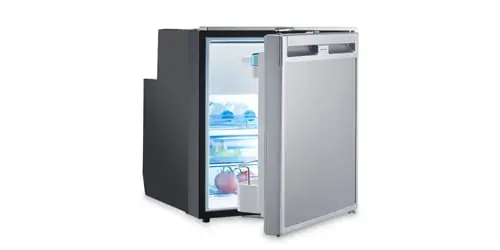
Showing all 36 results

Dometic CRE 80E Refrigerator – Fridge / Freezer

EZA Portable Compressor Cool Box Fridge / Freezer
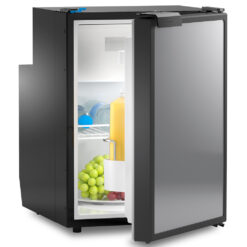
Dometic CRE 50E Refrigerator – Fridge / Freezer
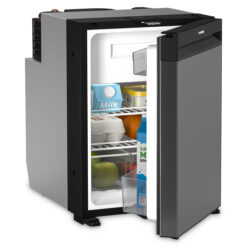
Dometic NRX 50C Refrigerator – Fridge / Freezer
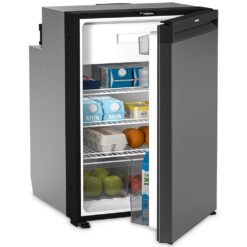
Dometic NRX 115C Refrigerator – Fridge / Freezer
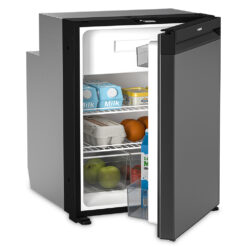
Dometic NRX 80C Refrigerator – Fridge / Freezer
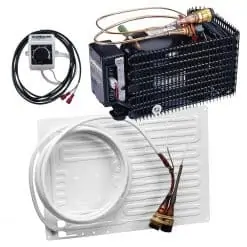
Isotherm GE80 Fridge Kit
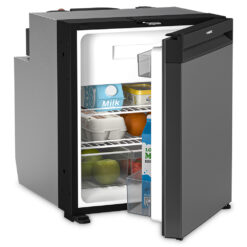
Dometic NRX 60C Refrigerator – Fridge / Freezer
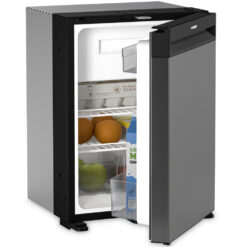
Dometic NRX 35C Refrigerator – Fridge / Freezer
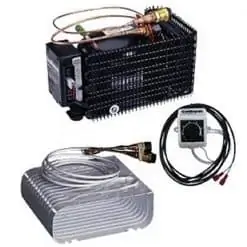
Isotherm 125L Fridge Kit With O Plate
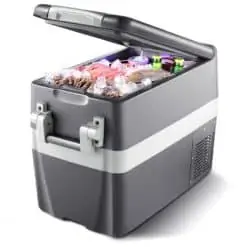
Trem Portable Fridge Freezer 40L
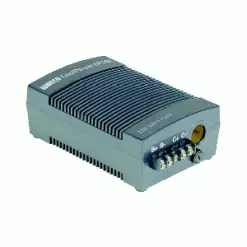
Dometic Waeco Mains Rectifier EPS-100w Cool Power
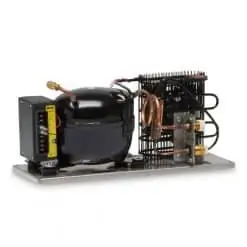
Waeco CU-54 Compressor Fridge

Waeco CU-55 Cold Machine Fridge Compressor

Dometic Waeco Coolpower MPS 35
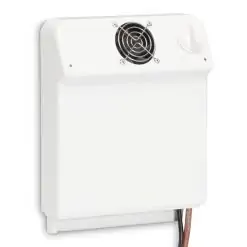
Dometic VD-15 Air Circulating Evaporator
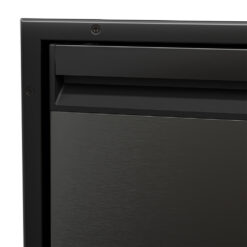
Dometic Flush Mount for NRX 50 / NRX 35
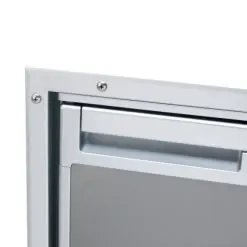
Dometic Waeco Flush Mount Frame CRX 50

Dometic VD-05 Flat Evaporator Plate Fridge

Dometic VD-02 Flat Shape Evaporator Plate

Dometic Flush Mount for NRX 80
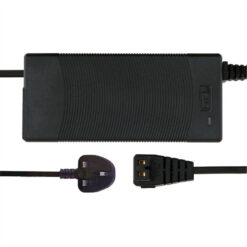
Mestic AC UK Mains Adaptor for EZA Portable Fridge
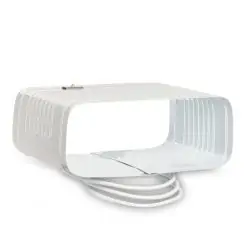
Waeco VD-09 O Shaped Evaporator Plate
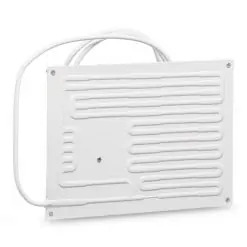
Dometic VD-18 Flat Plate Evaporator 80 Series
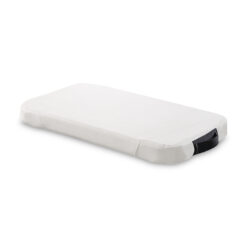
Dometic Seat For CL-42 Icebox

Waeco VD-16 Deep Freeze Air Circulating Evaporator
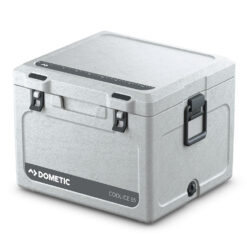
Dometic Coolbox 55 Litre – CL55

Waeco CRX Fridge Fixing Kits

Dometic Seat For CL-55 Icebox

Dometic VD-01 Fridge L Plate Evaporator

Dometic Waeco Flush Mount for CRX 65
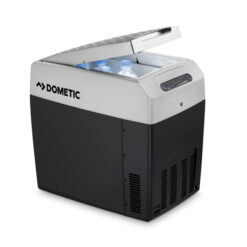
Dometic TropiCool TCX 21
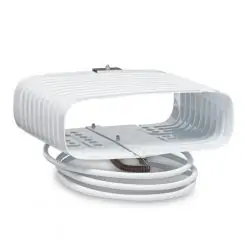
Dometic VD-07 Fridge O Shaped Evaporator Plate
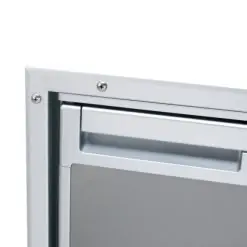
Dometic Waeco Flush-Mount Frame CRX 80
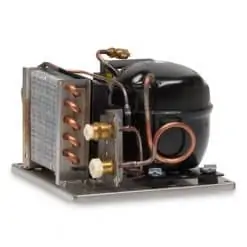
Waeco CU-85 Compressor Fridge
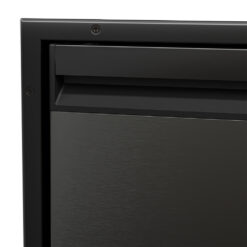
Dometic Flush Mount for NRX 60
Username or email address *
Password *
Remember me Log in
Lost your password?
Email address *
A password will be sent to your email address.

Marine Refrigeration Options for Boats and Yachts: What’s Available?
Finding the best refrigerator or freezer for your boat or yacht can be a surprisingly difficult challenge. Through our over forty-five years in business as a marine refrigeration manufacturer, Frigibar has recognized that the most difficult aspect of finding the right unit is knowing what’s available from manufacturers, and then deciding what type of option will fit your exact needs.
We’ve put together this list of all of your options for marine refrigeration systems broken down by style. We also highlight companies in addition to Frigibar who manufacture marine refrigeration systems.
Regardless of whether you’re building a vessel from scratch, just looking to upgrade your freezer, or refurbishing a historic beauty back to her original state, this guide will outline the different styles and companies in the industry, helping you to find the perfect fit for your vessel.
Styles of Refrigerators and Freezers
There are nine popular styles of marine refrigerator and freezer systems in all different price ranges and of varying finishes. Choosing the style that will best fit your boat is just the first step in finding the right freezer or refrigerator, but a very important one to make before moving on to the next step of the process, which is finding the ideal size and manufacturer.
Bench-Style
A bench-style freezer is one of the most useful types of marine freezers. They conveniently fit in many locations, including the deck or galley, provide significant storage space, and their short stature keeps them from obstructing views. Bench-style units are also common among fish boxes, dock boxes, and ice chests.

A primary benefit of bench-style freezers is their versatility, as many can be customized to double as a seating option. Frigibar, for example, offers custom cushions as an upgrade to maximize your available seating space.
Bench-style units can range anywhere from 30-80” long and are usually around 20-22” wide and 17”-24” tall. This is the preferred style of freezer at Frigibar due to its versatility, durability, and ease of use.

The upright freezers and refrigerators used in our homes are also manufactured for the marine industry. Pictured is an Electrolux upright freezer. Similar to the ones found in our homes, you can also find combination units that are both freezers and refrigerators.
While they bring the comfort of home to your boat, upright units require a location on your vessel with proper height clearance, are typically located in the galley, and are not designed to be moved from one location on your boat to another. They are not recommended for outdoor use on your dock or bow.
Portable freezers allow greater versatility than other refrigeration options and are among the most inexpensive options. There is a wide variety of portable units in terms of size, price, and quality.
These self-contained units are constructed from durable plastics and there are many styles available. Portable units are easily purchased online and at large marine supply stores like WestMarine.com. Many run off of a traditional outlet plug or a cigarette lighter. A built-in control panel and temperature readouts to make sure your food is kept at a safe temperature are some of the features you may find on higher end portable refrigerator/freezer options.

Pictured above is a portable Koolatron Krusader, which can be used to both cool and warm drinks and food.
Portable options are convenient for day trips and when in a pinch when a little extra space is needed or for a simple specific purpose — like keeping a couple of packs of beer cold while fishing for a few hours. Depending on the brand and intended purpose, their lifespans, power options and power consumption levels will vary.
Compact/Mini-Fridge
Small and compact refrigeration options are popular for vessels due to the limited amount of space that is available. Compact refrigerators and freezers, also known as a mini-fridge, can weigh around 60 pounds and have mounting options to fix the unit onto your vessel. Pictured below is a Dometic CR-1050, and retails for around $1,000.

Similar to portable options, mini-fridges have limited space, but can provide a safe and longer term cooling and freezing option than most portable units. If choosing to go with a compact option, purchase a unit intended for a boat, as it will run more efficiently than household units and traditionally last longer because they are built with materials specifically designed to be on a vessel. This option usually provides a refrigerator compartment as the main storage area, with a small freezer compartment at the top of the unit. There are, however, products in this category that come as a full freezer or only a refrigerator to suit your needs.
Wine coolers or wine refrigerators also fit into this category and are of similar size. They are designed specifically for storing wine at optimal temperatures and are a popular option for yacht owners.
Side-by-Side

Pictured above is a Nova Kool side-by-side refrigerator/freezer. Side-by-side units are often found on houseboats and can be both compact or full size for the galley. They offer more room and versatility than a single compact refrigerator or freezer.

Drawer units are stylish and can be hidden behind an attractive exterior door or paneling. Premium models can provide both refrigeration and freezing options without having to find a large space to place the unit. This option has become increasingly popular and there are many styles of drawer freezer/refrigerators available. The pictured drawer unit is an Isotherm Drawer 65 refrigerator and freezer, and is available at SailorSams.com, which also offers Frigibar freezers.
Conversion Kits

Conversion kits allow you to turn a standard icebox into a refrigerator or freezer. Pictured above are the Frigibar LectricIceman models (“EVH” left, and “A/E” right). The LectricIceman are DC marine icebox conversion kits and are highly efficient.
When purchasing a conversion kit, pay close attention to the maximum size of box the kit will accommodate and if there is a freezer compartment, which our EVH model does not have but the Frigibar A/E LectricIceman does have. There are a few important factors when converting an existing compartment into a freezer or refrigerator. Making sure the conditions of the space you wish to convert meet important requirements will determine how effective this option is for your vessel. View Frigibar’s conversion kits here .
Drop-In Freezer

A drop-in freezer is a fully-functioning freezer system that can be “dropped-in” to an existing space fit for the freezer. Pictured above is an Engel top-opening drop-in freezer unit. Dimensions need to be carefully measured before installation and compressor mounting needs to be considered before choosing a unit that will work for your boat. Top opening freezers and refrigerators are more efficient than front opening units since the cold air does not fall out of the unit when the door is open. If you are limited on space and not able to swing open a front-mounted door, this style of top-opening freezer could be a great solution.
Every boat owner, captain, and crew are unique. To get the most out of your adventures on the water, you may prefer a completely custom marine refrigeration system. Companies like Frigibar have been making custom systems for over 45 years.
The best place to start is by knowing the exact dimensions of the space you have available and what style and material you’d like your custom unit to be. You can then approach builders and manufacturers to get quotes and feedback on what is possible. If considering a DIY project, consult with a certified refrigeration technician to avoid common pitfalls and to make sure you aren’t getting into a time-consuming and costly project you aren’t prepared for.
Pricing/Quality
Ultimately, your decision as to what refrigerator or freezer is best for your vessel will come down to the space you have available , the style of system desired, what you want to use the unit for, and price.
Consider the company you’re purchasing from and their specialized niche. At Frigibar, we’ve focused on marine refrigeration options for the marine industry for over four decades. We know what will function properly on your deck in 100-degree weather out on the ocean and what will best fit your week-long or month-long international voyage or weekend jaunt in the bay.
You should also have a firm grasp on the company’s warranty options and if their units are serviceable by any certified refrigeration technician. At Frigibar we feel the more information you have on the options available, the better decision you will be equipped to make. We are happy to help guide you towards the best solution for your refrigeration needs even if it’s not ours. If you’re looking for additional information and would like to speak with someone directly, Frigibar is here to answer your questions. Call us at 305-757-7697.
Marine Refrigeration Companies
- Frigibar Industries, Inc.
- West Marine
- CoolBlue Marine Refrigeration
- Bowman Refrigeration
- Integrated Marine Systems
Additional Marine Refrigeration Resources on Your Available Options:
- Selecting Refrigeration for Your Boat
- Choosing the Perfect Refrigeration for your Boat
- Marine Refrigeration
Also watch “ What Should I Consider When Looking for a Freezer for My Boat? ”

Your cart is empty
Use this bar to show information about your cookie policy.
Boat Refrigerators: A Buying Guide
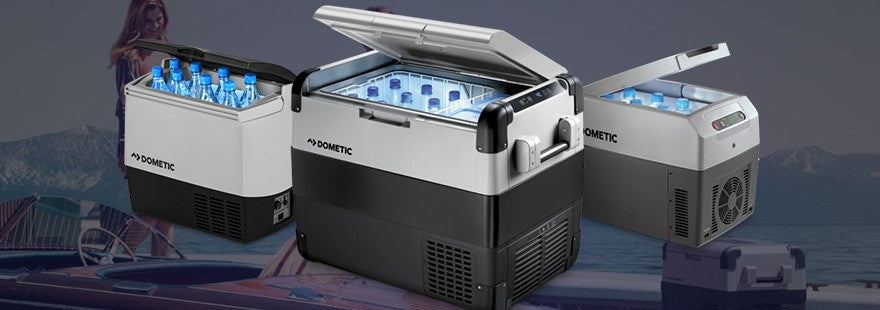
Thanks to boat refrigerators , it’s possible to stay on the water for many hours or even days and still enjoy fresh food and cold beverages. But like most boating accessories, the specific boat fridge you choose can make a big difference in your experience.
Unfortunately, when you shop for boat refrigerators, it may feel like you’re wading through a sea of numbers and letters with no clear direction or place to start.
So how do you pick? Consider these factors to find the right boat fridge for you:
“Built-in” Vs. Portable Boat Refrigerators
If possible, go with a built-in. Depending on the type of boat you own, you may have a galley with a dedicated place for a permanent or “built-in” boat fridge, or room to create that space. Built-in boat refrigerators will usually have a door on the side, like a typical mini-fridge, but sometimes they open from the top, like a cooler.
If you can, go this route. For a price comparable to portable options, a permanently placed boat fridge lets you enjoy refrigeration on every outing without lugging around a heavy piece of equipment.
A Portable Boat Fridge: the Next-best Thing
If you don’t have a permanent space for a boat fridge, don’t worry; you can still enjoy on-board refrigeration through the use of a portable boat fridge, sometimes called an “electric cooler.”
These devices do tend to look like coolers, but be aware that they are significantly heavier. Still, if a built-in fridge is not an option, a portable boat fridge is a worthwhile investment.
Several of our Dometic marine refrigerators are portable, such as the popular Dometic CFX-28US boat fridge . For even more space and premium features, consider the Dometic CFX-40W boat fridge , which has a capacity of 38 liters, can be controlled by Wi-Fi and offers a handy USB port for charging small electronic devices.
Power Compatibility
Some boat refrigerators run on AC power, some run on DC power, and some can do either.
If your boat runs on DC power and your boat fridge only runs on AC power, you’ll only be able to run your fridge using a strong enough inverter, an AC generator or shore power.
Likewise, if your boat runs on AC power and your fridge only runs on DC power, you’ll need either a powerful inverter or a DC generator to operate it.
Almost all boats today run on DC power (either 12 volts or 24 volts). Still, you’ll want to be sure you know your boat’s power type when you choose your boat fridge.
At Boat & RV Accessories, all our Dometic marine refrigerators can run on 12-volt DC or 24-volt DC power, and some can also run on AC power.
The size of your boat fridge will obviously be limited to the space available on your boat. So it’s important to carefully measure the width, depth and height of the spot where you want to put it.
Once you know your maximum outside dimensions, you’ll want to give yourself as much interior storage capacity as possible.
Boat refrigerators’ storage capacity can be measured in either quarts, liters, cubic feet or gallons. Here’s how these metrics roughly convert: 1 cubic foot = 28.3 liters = 29.9 quarts = 7.5 gallons
When in doubt, go for more internal storage space than you think you’ll need. And if you know you’ll need a good deal of space, consider a large unit like the Dometic CRX-1110E/F-S , with it’s generous 3.7 cubic feet of storage.
Storage Configuration
You’ll also want to consider how your next boat fridge is oriented and sectioned out. Is it divided into separate compartments? Are there spaces for all the types of items you want to store? Is there a freezer compartment, and is it big enough for your purposes?
There are no good or bad configurations per se, but you’ll probably find that some setups make more sense for you than others, depending on the foods and drinks you plan to take with you.
When Shopping for Boat Refrigerators, Consider Factors Such as:
- Built-in vs. portable options
- Power compatibility
- Size and storage capacity
- Internal organization options
- Interior light (or lack thereof)
- Temperature display format
Other Considerations
Once you’ve narrowed down your options based on the key considerations above, there are a few other details to consider.
For Both Portable and Built-in Boat Refrigerators, Think About These Factors:
- Is the opening a drawer or a door? Which do you prefer?
- Which way does the door open? Is it reversible?
- Does it have a light inside?
- Does it come with internal organization options, such as egg trays, bottle holders, adjustable shelves and vegetable bins?
- Does it have a digital temperature display?
- Is there a separate freezer compartment?
- Does its appearance match the style of your boat?
- Does it offer any extra features, like a USB port for charging other devices?
- Is it from a well-known, dependable brand?
- Is there a warranty?
When Considering Portable Boat Refrigerators, Also Ask:
- Does it have a convenient carrying strap?
- Does it come with a cover?
- Is it Wi-Fi enabled so that you can control the temperature with your phone?
Once you get to this point, choosing the qualities that matter most to you should be a little easier — maybe even fun.
Find Your Boat Fridge Now
Our lineup of Dometic refrigerators offers the reliability of a proven brand and a breadth of premium features, depending on the model.
Shop now and find your ideal Dometic fridge today!
Subscribe to our Newsletter and receive quality seasonal boat and RV content. Additionally, be the first to hear of new products and discounts!
100% free, Unsubscribe any time!
Free shipping
International shipping available!
Satisfied or Refunded
Click here for our 30 day return policy.
Top-notch support
Call 1-866-204-7049 to speak with a representative.
Secure payments
Pay with your preferred credit card or checkout with Paypal.
- Opens in a new window.
Yachting Monthly
- Digital edition

How to upgrade your boat fridge
- Duncan Kent
- August 4, 2022
A fridge is considered essential for a cruising yacht these days, but what is the most efficient system to install? Duncan Kent investigates the options

An efficient boat fridge is essential for those cruising long term. Credit: Alamy Stock Photo
Keeping your food fresh when sailing means having a decent boat fridge.
An old, leaky, inefficient one will increase the risk of your food going off and suck the life out of your batteries.
Insulation is key to an efficient boat fridge
Problems with boat fridges are almost always caused by the lack of decent insulation.
Early models often had thin (usually no more than 12mm) layers of cheap, low-density porous foam all around the cool box, topped off by a poorly fitting, often uninsulated lid with no seals.
It’s no good fitting the latest high-efficiency compressor cooling system to the old cool box if your hard-earned cold air leaks out through the seams or is quickly conducted away by saturated polystyrene foam insulation.

Eutectic holding plates ‘bank’ cold by freezing a liquid chemical inside it when the boat’s engine is running
When upgrading your boat fridge, rule number one is ‘Don’t skimp on foam thickness’.
When planning the task carry out your calculations allowing for at least 50mm-thick sidewall insulation, 75mm on the bottom and 25mm in the lid.
Add 50% again to these dimensions for a freezer compartment or if you’re intending to spend long periods in hot climates.
Insulation that is too thin can double the compressor operating time, and consequently the power consumption, of the boat fridge.
The type of foam you use is also very important.
It needs to be high-density, polyisocyanurate closed-cell foam, which is highly energy efficient and waterproof, and available from most builder’s merchants in flat sheets (Cellotex, Kingspan or similar).

The condition and design of all door seals is critical for performance of all types of boat fridge
Cheap, open-cell foam sheets such as polystyrene will quickly absorb water making them useless as an insulator, along with most DIY spray foams, which are rarely up to the job.
Ideally, you would buy, or already have, an existing polyethylene inner liner, to which you can glue the foam onto the outside.
Alternatively, you can fabricate a box from the foam sheets, seal the seams with foil tape, and then either coat the inside with GRP , finishing with a smooth gelcoat or use prefabricated glass-fibre wall panels cut to size then glued and sealed at the joins.
Although proprietary insulated boxes are widely available and even stocked by some chandlers, many do not meet the recommended insulation standards as they are primarily intended for vehicle use where power consumption is not necessarily an issue.
You could, however, buy one of these and simply add to or replace the insulation.
It’s important to realise that the insulation needs to be completely sealed on the outside by an air and watertight outer covering otherwise a great deal of condensation will be created – possibly waterlogging the foam and thereby destroying its insulation properties.
Cooling systems
Your choice of cooling system will make the difference between ‘vaguely cool’ and ‘properly cold’ storage, so a clear understanding of which system offers what is vital.
Cheap 12V car cool boxes nearly always use fan-assisted thermo-electric (Peltier-effect) cooling systems, which work by blowing air over a solid-state thermocouple.

The evaporator plate is the cooling part of the compressor-type refrigeration system and located in the fridge itself
While they might be fine for those who have an endless supply of power, they are not ideal for sailing yachts as they draw a constant current, usually between 6-10A.
They’re also seldom available above 35L capacity and rarely keep their contents sufficiently cool in ambient temperatures above 20ºC.
If you only go weekending or are happy to throw in a frozen water bottle or block of ice, and you kick start things by loading food straight from your home fridge, a thermo-electric cool box might suffice, but it will consume an inordinate amount of battery power on warm summer days.
For a proper boat fridge or freezer you will need a compressor-driven cooling unit in which an inert gas is cycled through an evaporator plate inside the fridge box, collecting heat on the way.
The compressor then pumps the gas to a condenser outside the fridge (the equivalent of a car radiator), which disperses the heat either by air or water cooling, and re-liquefies the gas before returning it to the evaporator.
Continues below…

6 of the best: Marine fridges
Fridges can use a fair bit of power – some more than others. The most energy efficient 12Vdc fridges are…

Marine gas safety: checks for peace of mind on board
Surveyor Ben Sutcliffe-Davies shares the simple checks you should do on board to make sure your gas installation is safe

Best boat cooker: how to choose an oven or grill for your boat
Whether you’re roasting a chicken with two veg, browning a gratin and steaming new potatoes, or just warming a pasty…

How to install a diesel heater on your boat
Installed properly, your diesel heater will last for years, but done badly, it could prove fatal. Theo Stocker discovers the…
For small- to medium-sized boats, the condensers are more commonly air-cooled, so it is important to ventilate the area around the cooler adequately as they can lose up to 50% of their efficiency when installed into a small, unvented locker.
Furthermore, the heat build-up in the boat can be unbearable in a hot climate, so boat owners intending to cruise the tropics would be well advised to ventilate the area to the outside or, better still, install a water-cooled condenser on the hull.
Dissipation of heat through water is some 20 times more effective than in air.
Some fridge cooling units utilise a heat exchanger through which cold sea water is circulated.

Fan assisted air-cooled condenser can heat up the air in your boat more than you might think
Although more efficient, the additional pump increases both the power consumption and the chances of something going wrong.
Units that circulate the coolant itself through a hull heat exchanger are more efficient and economical.
Modern 12V fridge compressors draw around 3.5A-4.5A while running.
However, this is usually for only 15-20 minutes every hour in a well-insulated fridge as the thermostat turns the pump on and off as required.
Thus, a 48W/12V fridge is likely to consume a very reasonable 24-32Ah over a 24-hour period with an ambient temperature below 20ºC.

A drawer fridge is a handy compromise that combines some of the convenience of a front-opener with some of the efficiency of a top-opener. Credit: Graham Snook
A common alternative, particularly in larger yachts and those that run their engines often, is to fit a device that senses the alternator charge when the engine is running and switches a variable speed electric compressor to high speed to bring the marine fridge temperature down quickly.
The compressor then drops back to low speed when the engine is shut down to save power.
The addition of a ‘eutectic’ holdover plate (a metal ‘box’ filled with a fluid that freezes at a temperature above that of water) will allow it to remain cool for long periods in between engine cycles.
Cooling elements running through a matrix within the plate freeze the fluid solid, turning it into a ‘cold reservoir’.
This is especially useful at night when the noise from an electric compressor can be disturbing.
Finally, the greater the surface area of the evaporator plate, the more heat it will absorb and the quicker it will cool the box down so, if building your own, choose the largest size you can sensibly fit into your box.
Saving power
Some cooling units incorporate a device that electronically monitors the battery voltage and controls the fridge accordingly.
When the engine is running the device senses the extra power available and turns the compressor to full speed.
When the engine is off it reduces power. This method works well when combined with a holding plate.
Top-opening, rather than front-opening boat fridges, are more energy efficient as the cold air tends to ‘fall out’ of the latter when opened.

Air-cooled condenser releases warm air into accommodation areas and fan may be noisy. Credit: Maxine Heath
As cold air sinks, it mostly remains inside the box with the former.
The bottom is always the coldest area where items susceptible to warming should be stored.
This is why front opening freezers tend to have drawers – they reduce but do not eliminate this ‘fall out’ of cold air every time the door is opened.
Many fridges will have a drain at the bottom, which is necessary for keeping water out.

Water-cooled condenser is a quieter, cooler and more expensive arrangement. Credit: Maxine Heath
It shouldn’t be permanently open, though, or it will allow the cold air to leak out.
It should either have a U-bend in the drainpipe or include a tap or pump.
Try to keep your boat fridge as full as possible but allow enough air space for the cold air to circulate.
Remove all cardboard packaging from food as this retains heat and often becomes a soggy mess that blocks the drain.
Finally, if weekending, load your boat’s fridge with food and drink that is already cool if possible and plan your meals and drinks carefully, opening the lid as few times as possible.
Saving money on boat fridges
Some may be tempted to install a domestic fridge instead of an expensive marine model.
However, they’re really not designed to (and may well not) operate when heeled over.
Besides, many of the steel screws, nuts, bolts and fittings will rust in no time.
Caravan and camper fridges look to be better value and often run on AC, DC and/or bottled gas.

A standard top-opening fridge on a modern production cruiser. The lid shuts flat to create additional workspace. Credit: Graham Snook
But once again these won’t work on an incline and using gas only when moored on the level would still require a proper flue arrangement, which is hard to waterproof from the sea.
Portable cool boxes and fridges are very popular for camping.
These can be thermo-electric or compressor types and often come with a cigar lighter-type lead so that they can be connected to a vehicle’s auxiliary power socket.
While this might be fine for the occasional weekend when initially filled with cold provisions, the non-compressor types will use a huge amount of power over 2-3 days.
Installation tips
How to convert an existing galley locker to a top-and front-opening fridge
- Location: Choose a location low in the boat, ideally below the waterline. The box ideally should not be installed too close to the engine compartment or boat cooker .
- Insulation: Insulation should be waterproof and water tight inside and out and at least 50mm thick. If you install an air-cooled fridge in a locker, it should be ventilated to enable a natural flow of air both in (lower) and out (higher). Alternatively, installing a small computer fan to assist the flow of air from the surrounding locker will increase efficiency, especially when cruising in hot climates.
- Lining: A watertight GRP interior keeps the insulation dry.
- Drawers: Drawers help front- opening fridges retain cold air.
Enjoyed reading How to upgrade your boat fridge?
A subscription to Yachting Monthly magazine costs around 40% less than the cover price .
Print and digital editions are available through Magazines Direct – where you can also find the latest deals .
YM is packed with information to help you get the most from your time on the water.
- Take your seamanship to the next level with tips, advice and skills from our experts
- Impartial in-depth reviews of the latest yachts and equipment
- Cruising guides to help you reach those dream destinations
Follow us on Facebook , Twitter and Instagram.

- Cooking & Outdoors
- Boat Cabin & Galley
Marine Refrigerators

Norcold A/C Adapter for NR740 & NR751 Refrigerators
Norcold A/C Adapter for NR Refrigerators Used for: NR740 NR751

Norcold DC751 2.7CF Marine Refrigerator-Black
Norcold DC751 2.7 CF DC Refrigerator - Black Front Norcold DC refrigerators deliver reliable performance for all applications. The Norcold NR751 fits the same cutout as the old 0751 models. This refrigerator is great choice for both marine and RV use...

Norcold DC740SS 1.7 CF Marine Refrigerator-Stainless Steel
Norcold DC740SS DC Refrigerator w/ Stainless Steel Front The Norcold DC740 model refrigerator replaces Norcold's previous model 0740. Fits the same cutout as the old 0740 models. Norcold's DC refrigerators are easy to clean, offer reliable...

Norcold DC740BB 2.0 CF Marine Refrigerator
Norcold 2.0 CF Built-In DC Refrigerator- DC740BB Black Front The Norcold DC740 model refrigerator replaces Norcold's previous model 0740. Fits the same cutout as the old 0740 models. Norcold's DC refrigerators are easy to clean, offer reliable...
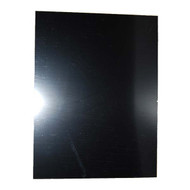
Norcold Black Refrigerator Door Panel for Model DE-0041
Black door panel for the de0041 model 3.6cf refrigerator. Dimensions of panel: 16-1/2"H X 17-1/8"W X 3/16"D.

Norcold DC751SS 2.7 CF Marine Refrigerator Stainless Steel
Norcold DC751SS 2.7 CF DC Refrigerator w/ Stainless Steel Front Norcold NR751 Marine refrigerators replace Norcold's older model 0751 refrigerators. Fits the same cutout as the old 0751 models. This DC only refrigerator provides reliable...

Norcold 635852 Replacement DE751 Door Shelf
Norcold 635852 Replacement DE751 Door Shelf This is a genuine Norcold 635852 replacement clear plastic door shelf.

Norcold A/C Adapter for NRF Portable Refrigerator/Freezer
Norcold A/C Adapter for NRF Portable Refrigerator/Freezer Used for: NRF-30 NRF-45 NRF-60

Dometic CRD1050 Boat Fridge Stainless Steel
Dometic CRD1050 Boat Fridge Stainless Steel The Dometic CRD1050 boat refrigerator provides a easy one hand freezer removable process. The stainless steel boat refrigerator features a 38.5 liter drawer fridge that has a suitable way of keeping track...

Dometic CoolMatic CRX1065E RV Fridge Stainless Steel
Dometic CoolMatic CRX1065E RV Fridge Stainless Steel The Dometic stainless CRX1065E refrigerator offers 60 l of cool storage and an optional 7 l of freezer space. The stainless RV refrigerator has many features that includes a IR sensor that activates...

Dometic ColdMachine CS-NC15 - Boat Fridge
Dometic ColdMachine CS-NC15 - Boat Fridge The Cold Machine CS-NC15 has highly coherent evaporator for circulating air. Cold Machine features an integrated low voltage cut off protection for long lasting durability. Features: Easy to...

Dometic CoolMatic CRX1065U RV Fridge Black
Dometic CoolMatic CRX1065U RV Fridge Black The Dometic CRX1065U boat refrigerator provides a easy one hand freezer removable process. The RV refrigerator has many features that includes a IR sensor that activates lights, boost mode for all freezer...

Dometic CoolMatic CRX1140S RV Fridge Silver
Dometic CoolMatic CRX1140S RV Fridge Silver The Dometic CRX1110E refrigerator provides a first class cooling performance; temperature control and compressor speed control enable highly efficient energy consumption. The RV refrigerator has many features...

Dometic CoolMatic CD 30 Compressor Refrigerator - Blk
Dometic CoolMatic CD 30 Compressor Refrigerator - Blk The Dometic CoolMatic CD 30 Compressor Fridge is constructed with a built in drawer refrigerator for trucks offering a lavish cold storage in a robust and compact package. The...

Dometic CoolMatic CRX50E RV Fridge Stainless Steel
Dometic CoolMatic CRX50E RV Fridge Stainless Steel The Dometic stainless CRX1050E RV refrigerator provides a easy one hand freezer removable process. The RV refrigerator has many features that includes a IR sensor that activates lights, boost mode for...

Dometic CoolMatic CD 30 Compressor Refrigerator - Blk/Chr
Dometic CoolMatic CD 30 Compressor Refrigerator - Blk/Chr The Dometic CoolMatic CD 30 Compressor Fridge is constructed with a built in drawer refrigerator for trucks offering a lavish cold storage in a robust and compact package. The CoolMatic...

Dometic CoolMatic CRX1080S Boat Fridge Stainless
Dometic CoolMatic CRX1080S Boat Fridge Stainless The Dometic stainless CRX1080S boat refrigerator provides a easy one hand freezer removable process. The stainless boat refrigerator has many features that includes a IR sensor that activates lights,...
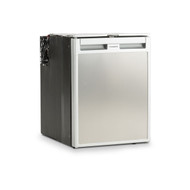
Dometic CRD1050E Boat Fridge Silver
Dometic CRD1050E Boat Fridge Silver The Dometic CRD1050E boat refrigerator provides a easy one hand freezer removable process. The silver boat refrigerator features a 38.5 liter drawer fridge that has a suitable way of keeping track of what you...

Dometic CRX1110E RV Fridge Silver
Dometic CRX1110E RV Fridge Silver The Dometic CRX1110E refrigerator provides temperature control and compressor speed control enable highly efficient energy consumption. The RV refrigerator has many features that includes a IR sensor that activates...

Dometic CoolMatic CD 20 Compressor Refrigerator - Blk
Dometic CoolMatic CD 20 Compressor Refrigerator - Blk The Dometic CoolMatic CD 20 Compressor Fridge is constructed with a built in drawer refrigerator provides generous cold storage in a robust and compact package. The CoolMatic fridge...
When you are shopping for your galley , do not think that the mini-fridges you see at the big box stores will be adequate. Galley refrigerators require compressors that accept higher ambient temperatures than kitchens in homes and apartments, and different ventilation systems as well. Something else to think about is a strong latch to ensure the door remains closed even in rough seas. Instead, consider Wholesale Marine’s selection of marine refrigerators from Norcold that have been specifically designed to grace any galley. These units make short work of preparing galley meals, and some models can also serve double duty and store your bait or catch fresh, too.
Keep Your Catch Cold With Our Boat Refrigerators
For your many voyages, consider Norcold’s 7.0 cubic foot CF Marine Refrigerator . It accommodates food in varied sizes up to a gallon, and also features a compressor that is hermetically sealed to prevent damage from exposure to moisture and humidity. Just out for the afternoon and want to keep your sandwiches fresh? Opt for Norcold’s NRF 60 AC/DC Portable Compressor Refrigerator/Freezer that chills without ice and plugs into any 12-volt outlet. It also serves a dual purpose; use with its AC converter in dorm rooms and offices when the boating season is over. Looking for something more permanent in marine refrigerators? Norcold’s 3.6 CF Built-In Marine Refrigerator installs in any galley and has been specifically designed for use in marine and mobile applications.
Wholesale Marine carries a full inventory of boat refrigerators for every kind of galley, even for pontoon boats! If you have questions or want to place an order, give us a call at: (877) 388-2628. Our knowledgeable staff will be glad to assist you. We’re here Monday through Friday, from 8:30 AM until 4:30PM EST and look forward to speaking with you! Remember, we offer same day, flat rate shipping on most items and free shipping for orders over $99! Add our Captain’s Club Rewards program for additional discounts, to our price-match guarantee, and issue-free returns, and you’ll wonder why you ever shopped anywhere else!
Subscribe to our Newsletter
Get the latest updates on new products and upcoming sales
Oops, something went wrong. Please try again.
You are now logged in!

Please verify you are a human
Access to this page has been denied because we believe you are using automation tools to browse the website.
This may happen as a result of the following:
- Javascript is disabled or blocked by an extension (ad blockers for example)
- Your browser does not support cookies
Please make sure that Javascript and cookies are enabled on your browser and that you are not blocking them from loading.
Reference ID: 7ff11160-62b0-11ef-bb15-591573d5303f
Powered by PerimeterX , Inc.

IMAGES
COMMENTS
There are three main types of marine refrigeration units: 1. Self-contained units (all-in-one or split systems), 2. thermoelectric, and 3. holding plate systems. Each type has positives and negatives depending on your boat, where you boat, and your marine refrigeration needs. Self-contained marine refrigeration units.
There are three basic types of marine refrigeration systems: drop-in units that run on 12 volts and look like something you'd find in a house or an RV; cold plates that are installed in an existing refrigerator or ice box and run on 12 volts; and holding-plate systems that can run on 12 volts DC, 110 volts AC or an engine-driven compressor ...
Most foods will last a reasonable length of time, about two weeks, in a refrigerator at 40° F (4°C). For longer storage, it is necessary to freeze the food. Meat will keep for several months at 0° F (-18°C). In general, if your freezer is cold enough to keep ice cream frozen, it is cold enough to preserve meat.
The best marine refrigerators are the Costway Compact Fridge, Alpicool C20, and ICECO VL60. Marine refrigerator brands make various sizes, with different prices, and intended use to compliment your boat. Depending on your intended use will matter to the efficiency of the boat fridge. In my experience, a boat fridge saves you money with storing ...
Getting cold drinks out, for example, is the reason behind the majority of times the refrigerator is opened on our boat. So we don't just put "drinks" in one area, but go a step further and always put beer, water, sodas and iced tea in the same order, from left to right, and always put the warm ones in the back, so there's never a doubt ...
The Isotherm 1410G Cruise is a well-insulated, 41-litre fridge box with a stainless- steel wall liner, a single wire basket and a well-sealed and insulated lid. It comes with a fan-cooled compressor that can be mounted on the side of the box or remotely within 1.5m of it, making it ideal for retrofitting into an existing cool box area.
When selecting a marine refrigerator, keep the following factors in mind: Space and size: Measure the available space on your boat to ensure the refrigerator fits comfortably. Take into account the unit's depth, width, and height, as well as any ventilation requirements. Power source: Consider your boat's power system (12V/24V DC or 110V ...
601 S Patrick St , Alexandria VA 22314-4018. Keep your products running from day-one with our perfromance guarantee. home. categories. galley & outdoor. boat cabin & galley. marine appliances. marine refrigeration. The type of boating you do determines the type of refrigeration you will need.
Adding or upgrading a boat refrigerator isn't like going out to an appliance store, buying the one you like and having it delivered. On a boat, you need to consider: Power and how you'll supply it. Where you'll install the compressor. The box - size, location and construction all must be considered.
Consult the manual for your reefer to discover how much power it uses; some manufacturers specify watts, so divide by voltage to get amps. (Most 12-volt refrigerators draw between four and six amps.) Four hours at anchor with the engine shut down means two hours of compressor operation, and a battery drain of 12 amps or so, over and above the ...
Replacing the fridge plug with a marine-grade plug and socket is an option, but we recommend hard-wiring the fridge to the boats 12-volt system. In any case, it is important that the sockets wire size and the socket or connection are rated to carry the current these devices require.
Waeco VD-09 O Shaped Evaporator Plate. £ 252.00 £ 219.95. 34%. OFF. Dometic VD-18 Flat Plate Evaporator 80 Series. £ 173.00 £ 114.95. Whether you're chilling your drinks or need a more robust yacht fridge, we have the right boat fridge solution online here. FREE UK shipping over £100!
Cruise 195 Built-In AC-DC Refrigerator/Freezer - 6.9 Cu Ft, 195 Liters. Available in 2 options. $2,921.99. In Stock. Vitrifrigo.
Bench-style units can range anywhere from 30-80" long and are usually around 20-22" wide and 17"-24" tall. This is the preferred style of freezer at Frigibar due to its versatility, durability, and ease of use. Upright. The upright freezers and refrigerators used in our homes are also manufactured for the marine industry.
Marine Refrigerators & Freezers for your boat by Vitrifrigo, Dometic, Isotherm, and NovaKool. Deck boxes, freezers & salty dogs from Frigibar. Contact us: 1-800-766-5256 | Email us: [email protected] ... Depends on your refrigeration needs - boat type, size, power capacity, and climate. If you will be out at sea for long periods of time ...
Boat refrigerators' storage capacity can be measured in either quarts, liters, cubic feet or gallons. Here's how these metrics roughly convert: 1 cubic foot = 28.3 liters = 29.9 quarts = 7.5 gallons. When in doubt, go for more internal storage space than you think you'll need. And if you know you'll need a good deal of space, consider a ...
When upgrading your boat fridge, rule number one is 'Don't skimp on foam thickness'. When planning the task carry out your calculations allowing for at least 50mm-thick sidewall insulation, 75mm on the bottom and 25mm in the lid. Add 50% again to these dimensions for a freezer compartment or if you're intending to spend long periods in ...
Shop for marine refrigerators and boat refrigerators. Wholesale offers the best selection from Norcold and other top brands. Order today! Lowest prices guaranteed. ... Black door panel for the de0041 model 3.6cf refrigerator. Dimensions of panel: 16-1/2"H X 17-1/8"W X 3/16"D. Add to Cart Quick view Add to Cart.
Coolmatic CRX 65 U Refrigerator and Freezer, 2.3 Cubic Feet. Coolmatic CRX 50 U Refrigerator and Freezer 1.7 Cubic Feet. Cruise 42 Elegance Black - 1.5 cu.ft., DC only, Black Door, 3-Sided Flange, Remote Mount Compressor. CRX-1140S Stainless Steel Compressor Refrigerator, 4.8 cu.ft. CONTACT WEST MARINE. Live Chat.
It weighs 59 pounds and measures 20.5 inches tall by 15.25 inches wide by 17.5 inches deep. The Melt: You have to buy a universal voltage refrigerator cord, which is not necessary for the other two refrigerators. It is also the heaviest of the three models. Price: $719; norcold.com.
The Isotherm Cruise 130 Elegance is a 4.6 cubic foot marine refrigerator (130 liters). The Cruise Elegance line is the next generation of Isotherm Marine Refrigerators. They are designed to increase efficiency and deliver greater performance in the marine environment. The Elegance line is characterized by a door that is two inches thick and ...
As well as compact marine fridge designs, some boat refrigerators have a detachable cooling unit which can be positioned on either side of the fridge and up to 1.5 m away for increased installation flexibility. A beveled edge on the backside of the boat refrigerator also helps to make the best use of space on board. Luxury marine refrigerators
3027 Capital Blvd Ste 111 , Raleigh NC 27604-3399. home. brands. isotherm. isotherm galley & outdoor. isotherm boat cabin & galley. isotherm marine appliances. isotherm marine refrigeration. Check your spelling or try fewer, more generic words.